Nike Marketing Strategy: How Nike became a market leader and you can "just do it" too!
Learn about nike's iconic marketing strategy and advertising campaigns. read how nike aces the 4ps of marketing mix - product, price, promotion & placement..
- overview#goto" data-overview-topic-param="history">Revolutionary history
- overview#goto" data-overview-topic-param="first">Nike's First Shoes
- overview#goto" data-overview-topic-param="mix">Nike's Marketing Mix
- overview#goto" data-overview-topic-param="strategy">Nike's Marketing Strategy
- overview#goto" data-overview-topic-param="noteworthy">Noteworthy Marketing Campaigns
- overview#goto" data-overview-topic-param="key">Key Takeaways

When you hear the word Nike, it’s impossible that you don’t see the Swoosh logo right in front of your eyes along with the words “Just Do It”. This is the result of Nike’s exemplary marketing and brand positioning since its inception in 1964. Today, Nike has established itself as the undisputed leader in the sportswear industry.
Being a consumer brand, Nike has managed to develop a competitive advantage of customer loyalty and strong brand recognition. What marketing strategy did Nike use to be the top-valued brand worth USD 176 billion in the sportswear industry? Let's find out!


Revolutionary history and innovation of the first Nike shoes
Inspiration and innovation are Nike’s deeply rooted core values. To understand this better, we need to know Nike’s history to understand why it is the way it is.
Foundation of Nike as a company
Nike Inc, previously known as Blue Ribbon Sports, was founded in the year 1964 by Bill Bowerman and Phil Knight. Nike is an American sportswear company headquartered in Oregon.
Fun Fact - Bill Bowerman was a track and field coach at the University of Oregon, and Phil Knight was his former student.
Source - Business insider
The jogging revolution
Jogging wasn’t mainstream in the early 1960s. It was believed to be only for athletes.
On a trip to New Zealand in 1962, Bill discovered jogging and its benefits. He published a pamphlet on jogging in 1966, which was then turned into a book the next year. Bill is credited for bringing the jogging craze which swept America in the late 1960s. Jogging was then seen as a means to maintain a healthy lifestyle.
First shoes by Nike – Waffle Trainer
Nike’s first retail outlet was opened in 1966. Once, while having breakfast, Bill looked at the waffle and said the top part would be perfect for the track field. He got the materials for making the shoe soles and poured them into the waffle iron. This is how Nike created its first shoe, Waffle Trainers. Nike launched them in 1973.
Where did Nike derive its name and logo from?
Blue Ribbon Sports was renamed Nike Inc in 1979 and went public in December 1980. Nike derived its name from the name of the Greek Winged Goddess of Victory. The logo represents the wings, symbolising motion and speed.
Nike’s first content marketing strategy
In Nike’s case, content marketing came before the product. The customer base was built before the idea of the product was even thought of. Which marketing strategy did Nike use in its initial days?
Customer awareness
In the 1960s, people were unaware of the benefits of jogging. Selling shoes in a market that didn’t know it needed them would have been a fool’s act. Nike sold shoes only when customer awareness was shifted from Unaware to Solution aware.
Existing pain point
Nike solved an existing problem which is ‘how to get fit’. It didn’t try to solve a non-existing pain point.
You must develop products keeping your customers in mind.
Benefit-centric marketing
Nike shoes were sold as a means to support a healthy and sporty lifestyle. It didn’t boast about its product features. It used a benefit-centric marketing plan instead of a product-centric one.
Sell products you believe in
Bill Bowerman invented shoes that were lighter and faster. This shows how passionate he was about them. Nike’s belief in providing the highest customer value originates from its founders themselves. Nike truly believes in its products. This reflects in Nike’s customer perception as well.

Nike Marketing Mix - The four P’s of marketing
Nike uses its marketing mix to determine the strategies to be applied to execute its marketing plan. Nike’s marketing mix focuses on high-quality sportswear sold through online or offline mediums at a premium price while using customer-centric promotion strategies.
Nike Product Strategy
Although Nike shoes are the MVP, it’s a sportswear brand. Nike's products range from sports shoes, clothes, backpacks, sports equipment, and accessories.
Nike has positioned itself as a leader in the sportswear industry. It focuses on high-quality products that are durable, visually appealing, and trendy.
Nike produces distinct shoes for different sports like running shoes, basketball shoes, tennis shoes and ice hockey skates. Air Jordan is the most valued Nike shoe brand. Modern technology and innovation are the core elements of the creation process of Nike products.
Nike’s Pricing Strategy
Nike charges a premium price for its product quality, the value it provides, and the intensive technology investment.
Nike's strategy consists of the below two pricing plans:
Value-based pricing strategy
In this pricing strategy , Nike analyses the consumer perception that is the maximum price the consumers are ready to pay for its products and charges value-based prices.
Premium pricing strategy
Nike charges premium prices to establish itself as a premium brand amongst its competitors. Premium branding is done by partnering with high-profile sports celebrities and sponsoring them as brand ambassadors as well as being a sponsor of sports events like being an Olympic sponsor. This establishes Nike as a brand with premium products.
Nike’s Distribution channels
Nike sells its products through online and offline mediums for higher market reach.
Retail stores
Nike uses retail stores to sell its products to a wider target market without spending extra costs on infrastructure. These are strategically located to be easily accessible to consumers. This includes local stores as well as shopping malls.
Online store
Nike’s online store website offers a wider range of choices along with the convenience of place and time. It offers an effortless and fun user experience through vibrant pictures, detailed filters, and smart product recommendations. Online store product prices are lower because other than delivery and manufacturing cost, there isn’t any added cost.
Nike-owned retail stores
Nike-owned retail outlets are called NikeTown. In these stores, only Nike athletic footwear, apparel, and accessories are sold. This allows them to control the sales process and provide customers with a brand-focused user experience. As of May 2022, Nike owns 1,046 retail stores all over the world.
Source - Nike Website
Nike Promotion Marketing Strategy
Nike uses a highly influential promotion marketing strategy to maintain a strong brand image and bring in maximum sales.

It uses every possible marketing trick in the book to amp up its reach like Banner Advertising, placing a sales team for personal selling through retail outlets and direct marketing via website, emails, and social media networks. Nike also spends a ton of money on sales promotions by offering discount codes. It's also heavy with its Public Relations activities and ads via digital marketing strategy to improve its brand value.
As of 2022, Nike's global ad spending amount to USD 3.22 billion alone, minting them USD 46 billion in revenues!
Nike's Marketing Strategy
Nike has adapted well to the ever-changing trends and dynamic technology without losing its core identity, brand message, and voice. Their approach is still consumer-centric and benefit-driven. Even in a fiercely competitive market, Nike manages to be the talk of the town with below methods:
Brand positioning
The Nike marketing strategy operates in a focused target market which is the sporting goods industry. Nike’s target audience is professional athletes, sportspersons, and people who want a healthy and sporty lifestyle.
Focused marketing helps the Nike company be at the top of the mind of its consumers. When people think of sportswear, they automatically think of Nike.
It uses a customer-centric approach. Instead of boasting about the product and its features, Nike focuses on their consumer’s pains and problems and how a Nike product can solve them. Few companies are doing it like Nike.
As a brand, you must define your ideal customers and serve only them. If your marketing message doesn’t target a specific group of people, or you are serving multiple vertical markets, you are writing your doom.
Your consumers don’t care about the brand-new features of your product. They care about how it can make their life easier. Don’t sell products, sell benefits.
Emotional storytelling
Nike is the ace of brand storytelling. Through Nike’s ‘Just Do It’ campaign, it tells stories to encourage and inspire people to achieve their fitness and sports goals.
Authentic stories build trust and a strong connection with the brand. Nike helps people to dream big and customers feel like they belong. This builds a strong community and unshakable consumer loyalty, which is rare to find in other brands.
Nike’s very first commercial shows a shirtless 80-year-old man running across the Golden Gate Bridge. He runs 17 miles every morning. The core message is, if an 80-year-old can do it, you can too!
Nike - Just Do It (1988) - Very first commercial
Nike’s Find Your Greatness campaign conveyed the message that greatness isn’t for a select few. It’s in every single one of us. This ad shows people from various parts of the world and ages overcoming their fears and achieving greatness.
Nike: Find Your Greatness
By taking inspiration from the Nike marketing strategy, you must use storytelling in your content marketing strategy. Take your potential customers on a Hero’s journey where they are the protagonist fighting their way through obstacles and achieving victory.
The Nike social media strategy
Nike’s consumers are the younger generation between the ages of 15 and 45.
The company depends on this data to find out on which social media platforms Nike users hang out and develops a marketing plan to provide value to them on those platforms.
Social media marketing channels help Nike improve its brand recognition and be at the top of its target customers’ minds.
Nike differentiates itself based on the value it provides instead of price or any other factor.
Nike’s social media content types include:
Sports celebrity endorsements

Nike collaborates with high-profile faces in the sports industry and uses emotional marketing and storytelling to celebrate their achievements and talk about their failures.
Endorsements by famous athletes like Michael Jordan, Kobe Bryant, Ronaldo, Serena Williams, LeBron James, and many more establishes Nike as a premium brand.
In this Instagram post, Olympian and gold medallist Simone talks about how becoming the first Black swimmer to win gold impacted the future of the next generation of Black swimmers.
https://www.instagram.com/p/ClboXHrrVMj/
Joining customer’s social conversations
Nike joins existing customers' conversations on social media where it is mentioned. This ensures direct communication with Nike customers. Nike’s audience feels heard and valued, further solidifying its relationship with its customers.
Source - Twitter
Affiliate marketing by influencers
Nike developed an affiliate marketing program through which influencers can earn commission by promoting the line of products Nike sells. This enables the brand to earn mentions across various social media channels in the form of product unboxing, reviews, or use case videos. Nike reaps the benefits of influencer marketing without spending extra costs on advertisements.
Nike’s Email marketing strategies
Email marketing is at the core of the Nike marketing strategy. Nike sends 3 - 4 emails every week to its customers to keep them engaged and eager for more.
The emails are automated responses to various touchpoints like signing up, leaving reviews, successful purchases, product delivery, and newsletters. Their email marketing strategy enables them to be in direct contact with their target consumers and stay consistently connected.
4. Ensuring a simple, fun, and hassle-free online shopping experience
Nike ensures a smooth user experience for online shopping through its strategic eCommerce marketing strategy
Nike website theme - bold, vibrant, and youthful
Nike uses youthful, fearless, bold, and athletic pictures on its website to align with its brand image. Nike positions itself as a sports brand that is unique, youthful, and vibrant.
Source - Nike website
The detailed product filtering process
Customers can filter products on the basis of type, gender, price, colour, brand, sport, athletes, weather, and collaborator. This detailed filtering helps customers to find exactly what they want, fast!
Product recommendations
Nike's website recommends relevant products to the product the user is viewing. This makes the buying process easy, quick, and effortless for the buyer.
Nike membership
Nike membership provides members exclusive products, Nike by you customization, and special offers to its members.
5. High-quality, unique and innovative products
Nike puts its customers first. It collects data on its target customer behavior to optimize its products and services to meet its needs.
Nike uses advanced and innovative technology for constant improvement in its products.
One of the most innovative Nike products is HyperAdapt 1.0. A Shoe with adaptive lacing technology that laces itself when you put your heel in.
Source - Amazon Website
Noteworthy Nike Marketing Campaigns
Nike’s creative advertisements are at the centre of the Nike marketing strategy. They deliver impactful messages that stay with the viewer long after seeing them. Nike is well known for its campaign ‘Just Do It’ which encourages people to go after their dreams and just do it!
Ten of Nike’s most noteworthy advertising campaigns:
I am not a role model - Charles Barkley, 1993
Nike’s controversial ad sparked an uproar about whether athletes should be looked at as role models.
Nike "I Am Not a Role Model" commercial w/Charles Barkley - 1993
Hello World - Tiger Woods, 1996
This advertisement introduced Woods to the world when he was just starting his career in golf. Nike claimed Woods will be influential in the future, and its predictions came true.
Failure - Michael Jordan, 1997
In this Nike ad, Michael Jordan talks about his failures. This is a retrospective ad on his Basketball career.
Love me or hate me - Kobe Bryant, 2006
This ad was crucial because it was Nike’s first ad with Kobe Bryant after he was faced with sexual misconduct allegations. While others didn’t want anything to do with him, Nike stood their ground and supported him.
I feel pretty - Maria Sharapova, 2006
This ad was aimed at eliminating the “Pretty Girl” label Maria was given despite taking the tennis world by storm.
No excuses - Matt Scott, 2007
Matt Scott, an American wheelchair basketball player, points out excuses people use to not do something in this powerful ad.
Bottled Courage - Olympics, 2008
This Nike ad’s message is that the courage you are seeking on the outside is already within you.
Equality - 2017
Nike aimed at fighting the prejudice and discrimination against Black people with this ad.
What are girls made of? - 2017
This stunning Nike ad starts with the girl stating the general stereotypes about girls and then goes on to share that girls are made of iron, resilience, dreams, and dedication.
One day we won’t need this day - 2020
On International Women's Day in 2020, Nike honoured women’s achievements by featuring women athletes in its ad, hoping that someday we won’t need a day to celebrate women.

Key takeaways from the Nike Marketing strategy for entrepreneurs
Nike’s marketing strategy is a gold mine to learn from and grow your brand. These are the key takeaways you must apply to your brand to see exponential growth.
Identify what your target customers want from you
Nike identified its target customer’s need to become fit. It smartly positions itself as a brand that helps its customers reach their fitness and sports goals.
Identify your target customer’s problems, pains, concerns, fears, and doubts and help them overcome them. You can build brand authority by answering your target customer’s most prominent concerns. Provide them value instead of boasting about your product and being salesy.
Instead of putting all your focus on product features and competitor strategy, identify what your customers want from you and give them that.
Research the best medium to reach your customer
Determine your target customer, know where they hang out and how best you can reach them.
Don’t be on a platform just because everyone else is. If your target audience is below 25, they will be hanging out on Instagram way more than on Facebook. If you are on Facebook instead of Instagram, then you are doing it wrong. Create content with your audience in mind and share them on the right platform at the right time.
Bonus tip: Provide consistent value to stay on the top of your target audience’s mind.
Create customer-centric content
Whatever form of content you create - blog, social media posts, videos, white papers, they should all be customer-centric. That is, they must provide the best content to solve your customer’s problems.
If you provide high-quality content, then you’ll be seen as a market leader. Your content will be widely shared and spread.
The biggest key takeaway from the Nike marketing strategy is that your customer must be your hero and included in your brand image . Everything you create and share must be done keeping them in mind. If you're building a retail product, we would also recommend you read our marketing case study on Jockey which also uses similar product-focused marketing tricks.
- popover#mouseOver mouseout->popover#mouseOut" data-popover-translate-x="-25%" , data-popover-translate-y="-220%"> Copy link
- bottom-bar#toggleTagsSection"> popover#mouseOver mouseout->popover#mouseOut" data-popover-translate-x="-25%" , data-popover-translate-y="-220%"> Copy Link
- bottom-bar#toggleTagsSection">

"Must read for every entrepreneur"

"The best part is it's written by real entrepreneurs"

"My favorite newsletter on the web"
You'll love these articles too!

Co-founder at Flexiple, buildd & Remote Tools ($3 million revenue, bootstrapped)
Breaking Down The Maruti Suzuki Marketing Strategy: How they became a brand that rules India's automobile market
Learn about Maruti Suzuki's iconic marketing strategy and advertising campaigns. Read how Maruti Suzuki's aces the 4Ps of marketing mix - Product, Price, Promotion & Placement.

Clinical Research | Data Analytics

Partner at Deloitte | Banking & Capital Markets | Cloud Strategy | FinOps Offering Leader | Board...

Co-founder & CEO at Flexiple ($3mn+ revenue, bootstrapped) & buildd.co | Helping Startup...
Swiggy Business Model: How the Company is Building a Brand That's Hard to Resist
Explore the innovative business strategies behind Swiggy's success, including the company's approach to building a strong brand and delivering unbeatable customer experiences. Learn how Swiggy is disrupting the food delivery industry and solidifying its place as a leader in the market.

Market Penetration Definition, Rate Calculation Examples and Strategies
Learn all you need to know about market penetration. Find the market penetration definition, how to calculate it, examples and strategies.

BE Mechatronics |

Hi! My name is Uche, a Nigerian and undergraduate degree student at Brigham Young University (...

Five Genius Takeaways From Nike Marketing Strategy
- March 29, 2024
- No Comments
Brands, whether small or large, should definitely ramp up their marketing strategies to capture audience attention and forge lasting emotional connections that lead to customer loyalty. However, the question arises: How can this be achieved? We live in a digital era where we’re bombarded with countless brands and information, making it challenging for small businesses to make a mark in the industry quickly. It takes time, effort, and outstanding marketing to reach a position where recognition extends beyond the targeted audience. So, if asked to name the top three sneaker brands, Nike undoubtedly secures a place on that list.
Nike’s marketing efforts are often regarded as the holy grail for new advertisers and marketing managers. With a solid brand identity, Nike has established a presence that seems unbreakable. Its global recognition is a testament to Nike’s dominant marketing and advertising efforts.
In this article, we’re diving into
- The History of Nike
- The key tactics behind its marketing evolution
- Five genius takeaways
- How can you apply them to your own brand?
The concept of Nike as a global sports apparel giant is more than just a dream. They effortlessly tapped into the power of brand identity , forming emotional connections with people and enlisting influential figures to endorse their products. Whatever strategies they’ve used, they’ve undeniably hit the mark and continue to win over devoted fans. After thorough research into their marketing journey, I’m here to offer you a concise summary for you to set as a blueprint. New brands can definitely learn a thing or two about reaching global success from Nike.
Table of Contents
Bill Bowerman, A Track and Field Coach & Nike History
Early years:, the birth of nike:, celebrities taking center stage:, the just do it era:, sustainability and inclusivity:, five takeaways from nike marketing strategy:, 1. emotional marketing:, 2. being exclusive:, 3. celebrity endorsements and sponsorship:, 4. focusing on pain points:, 5. target audience segmentation:, how to apply nike’s marketing strategy to your brand, addressing social issues in marketing:, conveying a story:, embrace the digital realm:, consistency is key:, prioritize innovation:, leverage celebrities and influencers:, conclusion:, what was nike’s marketing strategy.

More than an American multinational corporation, Nike is a brand and an emotion to many people out there. The brand consistently inspires and connects with a global audience on an emotional level, breaking the barriers of language, distance, and diversity with its once-in-a-lifetime influential marketing campaigns .
The iconic swoosh symbol on the Nike logo has become the gold standard for people when they want to create a logo . The real purpose of Nike’s marketing strategy was to keep pace with the world’s forward movement. Over generations, we’ve witnessed the beautiful evolution of various stylish and sustainable products Nike has contributed to the world. The tagline “just do it” can be recognized even by kids playing in the playground solely because of Nike’s strong marketing presence, which they’ve never stopped doing. Kind of ironic, isn’t it? Considering Nike “just do it,” and they never stop inspiring people.
One thing that everyone adores about Nike is how admirable the fact is that this brand is building communities where people feel like they belong to each other, campaigns to protect our planet, and also makes sports accessible beyond diverse horizons. So, where did it all start? Let’s look at the history.
Nike was founded in 1964 by Bill Bowerman and his former student Phil Knight . It began with a mission to “ bring innovation and inspiration to every athlete ” and was based in Oregon, Nike, Inc. This includes the Nike, Converse, and Jordan brands, among many others.
Bill Bowerman, a track and field coach at the University of Oregon, and his former student Phil Knight joined forces to establish Blue Ribbon Sports. The brand underwent a rebranding strategy in the 60s, relaunching as Nike in 1971.
Some historically significant events that occurred in Nike’s history:
- In 1971, Nike introduced the Swoosh logo, one of the most recognized brand logos in the world.
- In 1972, Nike revealed the popular Moon Shoes.
- In 1982, Nike introduced the Air Force 1 basketball shoe.
- In 1994, Nike signed LeBron James.
- In 2000, Nike launched Nike Shox in the market.
As of 2024, Nike is renowned as the largest athletic apparel company, dealing with the design , development, manufacturing, and global marketing sales of footwear, accessories, and other sports-related services. Now, let’s look at the evolution of Nike’s marketing strategy over the years.
Evolution of Nike’s Marketing Approach

We are aware that Nike is a trusted brand by people all over the world, and a lot of it has to do with the successful advertising and marketing in the industry. This led to the global recognition and brand trust it has today. So, I feel like before we look into the current strategy deployed by Nike, we should better understand the marketing path it has taken over the years. Tracing the evolution of marketing strategy over the years helps us understand the patience, consistent hard work, and admirable work ethics they took to boost the brand name.
It all began with Blue Ribbon Sports, which primarily served as the distributor of Japanese running shoes. So, we have to start right from the beginning. Right from the start, Nike’s marketing was firmly focused on the performance and innovation of the running shoes it created.
In 1971, Nike formed a distinct entity by drawing inspiration for the name from the Greek Goddess of Victory. The first marketing strategy was using a brand name associated with athletics, war, and everything in between. This also formed Nike’s important emphasis on achievement and empowerment, which became central to their branding .

The way celebrity endorsement can boost a brand’s image is practical in Nike’s case, and 1980 heralded a new era for them. The most prominent collaboration was with basketball icon Michael Jordan. High-profile celebrity endorsements also solidified its relationship with its consumers and created a good emotional connection with the targeted audience, making Nike a top competitor in the field.

It was in 1988 when Nike first introduced the iconic and world-famous “Just Do It” slogan. This reflects their ethos of personal determination and resilience. It quickly became very synonymous with the brand’s vision and mission. Just Do It is a rallying cry for athletes all over the world, inspiring greatness and encouraging individuals to push beyond their limits. It can also be envisioned as success not being for people who are waiting to be noticed but for people who take action and embrace challenges.
Nike emphasized sustainability and inclusivity in its products and marketing. Its overall aim was to create eco-friendly products and promote values like social responsibility , togetherness, and athletic spirit among today’s consumers. Whatever marketing strategies it used aligned with its idea of sustainability and inclusivity and with its adaptability to changing consumer landscapes.

Nike’s advertising tactics revolve around the four Ps: Price, Product, Promotion, and Place . The brand leverages these components in a good amount in all of its advertising tactics. Nike products, as you know, come at premium prices, and for consumers, this emphasizes that Nike doesn’t compromise on product quality and benefits. Nike’s products are also uniquely pleasing and are seen as premium products that make you feel like you belong to a community with a great reputation. Nike also utilizes promotions that carefully target a particular group: sports enthusiasts and shoe freaks. The brand also uses third-party resellers and retailers to skyrocket sales and diversify its physical stores over various regions across the globe, making a strong presence in online stores.
Nike’s effective marketing strategy isn’t that hard to analyze and learn; you can easily watch a few of Nike’s advertisements and see the common tactics they follow to impress their target audience. But wait, I’ve made the job easier for you by giving five genius takeaways from Nike’s advertising and marketing game.

If you look at some of Nike’s video advertisements, you know you get emotional. The moving emotional ads can push you to shed a tear or two. This is how Nike leverages emotional appeal to tug at their audience’s heartstrings. Viewers tend to get emotionally attached to certain videos and learn one or two things. If the ad stresses the customer’s real needs, it also boosts brand image. So, the primary reason is relevance is significant in advertising. If the ads talk and share opinions about any current relevant topic, it can foster an emotional connection from the audience , building a deep layer of trust and loyalty towards the brand.

If you closely look at almost all the ads Nike has ever put out, you’ll easily notice that not many of them highlight any products but showcase athletes’ struggles and how they overcome them. This is a great way of storytelling as it emphasizes the journey of a person and indirectly tells the audience that Nike is part of that successful journey. This exclusivity makes the audience think about themselves as professional athletes, symbolically and figuratively, and they’ll associate the Nike shoes with something they should own to face challenges. Regardless of status, money, and celebrity names, all kinds of people go through different struggles, and this way, people can identify closely with how Nike is promoting exclusivity in their products. They don’t oversell their products; they casually make the audience understand the value of the brand and align their common vision and goals with those of the company through such strategic ads.

Nike also relies on celebrities, popular athletes, and influencers to up their game . You can see that when a brand supports a certain athlete or celebrity who has inspiring life and motivational stories to tell, that means the brand aligns with their similar aim to push people across boundaries. This way of collaborating with the right kind of celebrities and athletes has pushed Nike into a global brand that exists even today. Nike also leveled up its digital game by partnering with multiple influencers to spread the word across different target audiences and leverage influencer marketing.

Now, everybody knows the importance of consumers, but Nike goes all the way to focus on their audience’s pain points. This is an extraordinary element in Nike’s advertising strategy. Nike’s goal is to make its users triumph and push them to greater achievements . Nike shows the genuine side of all sports athletes by showcasing their struggles behind the scenes. This is to help potential customers relate to the brand and its vision .

The target audience is the holy grail for every marketing adventure. Once you narrow down your own target audience, you can easily classify them into groups. This way, advertisers can experiment with their marketing campaigns. Nike’s target audience is easily very diverse, as is its extensive reach. Now, how does Nike differentiate them? The brand identifies the target consumers by using demographics, psychographics, behavior, and location. This segmentation is required to diversify your advertising efforts so that budget, time, effort, and ideas don’t go to waste.

As a new brand, Nike’s 60-year legacy offers a lot to study, which you can also apply to your own brand in terms of its marketing tactics and advertising genius steps. Here is a blueprint for mixing your marketing game with the following steps that have been successful in terms of Nike’s marketing ways.

If you closely study Nike and its overall marketing approach, you can see that they consistently integrate social issues to market their products. You can see important topics such as gender equality, environmental sustainability, and racial justice being addressed by Nike. This can be viewed as Nike’s never-ending commitment to bring a positive impact on the sports world. When Nike started addressing social issues, it gave the picture that Nike took a stand on causes that really mattered to their customers. Nike demonstrates a lifelong assurance that it always prioritizes social responsibility and positions itself as a brand that cares about real-life issues rather than just profits.
So as a brand, you can always address social issues in a way that shows what you stand for, especially issues that your community faces, so that people can connect with you more genuinely. They’ll see you as a genuine brand that cares about their issues rather than just a marketing technique. You can ignite inspiration and motivate individuals to fight for their cause.
Successful brands focus heavily on emotional storytelling. And no one does it better than Nike. Nike’s advertisements rarely mention its products. Instead, they invoke the right emotions through meaningful and inspiring storytelling. pic.twitter.com/DSMWb2Aq4D — UsmanSheikh (@UsmanHSheikh) October 12, 2023
How beautifully Nike has always conveyed a story that can seem personal to its target audience? Here, Nike conveys an emotional story that is simple and effective, talking about the pain points in a way that is understandable with their brand voice. Nike does this by tapping into sports cultural trends and shaping consumer behavior, especially when fostering connections with their audience. When Nike aligns itself with activities and stories that capture the attention of…
Nike also steps into sponsoring events related to its niche while also demonstrating an image that it wants to connect with the market more. Now, as a brand, you can convey stories that connect and resonate with the audience while also making sure you share your brand’s values and mission to inspire and motivate your target market. There’s no better way to connect with an audience on an emotional level than using storytelling techniques as part of your advertising or marketing campaigns.

In the digital age, Nike understands the importance of having a strong online presence. Here, we understand the power of social media platforms and how they are seen as modern marketing tools. Now, Nike has also stepped up its online social media game and digital marketing efforts to engage directly with its audience and foster connections with the community. Here, Nike puts out captivating and moving applications like the Nike app. It also built a loyal following on platforms like Facebook, Instagram , and Twitter. This amplifies their reach across the expansive digital landscape through branding and marketing.
As a brand, you can now easily delve into social media and start content marketing and multimedia campaigns to spread your brand name across audiences. You can utilize the variety of platforms here and there to captivate your audience with your brand. This is a good idea if you are a small business, and I feel you should start putting out great content to engage your audience, make them trust your brand, and promote customer loyalty.

We’ve been talking about how Nike, starting in 1964, has consistently maintained their image as a reliable, popular brand over the years. That means they’ve never let down any of their campaigns and kept on improvising them . So consistency should also be what your brand has to follow. Consistency reinforces your brand identity and also leaves a lasting impression on the minds of your targeted audience. Imagine even new generations coming to know about your brand and celebrating you after years. So, like Nike, if you just do it now, you can make an effective impact in the future if you consistently follow your marketing tactics.

The way Nike prioritizes innovation is astonishing to watch. Product innovation plays a crucial role in Nike’s marketing plan. Nike knows how to challenge themselves to push the boundaries of design and technology and innovate unique products into their catalog. Here, Nike also includes emotional tactics into creating products that perform and resonate with consumers. Nike creates a desire among consumers to be a part of the brand by showcasing the story behind the product and highlighting its innovative features and benefits.
One example is when Nike developed FlyKnit technology, a revolutionary fabric that provides a lightweight and breathable fit. Nike’s marketing team capitalized on this innovative fabric by mixing it with marketing campaigns and captivating advertisements that showcased this fabric in action. Nike makes use of such unique techniques to put out a marketing game. This created a huge sale, and people wanted to try out this product because it also emphasized the emotional connection. So as a brand, you can focus on being unique and create innovative products that are useful for your target consumers. It also means being innovative in the kind of content you put as part of your strategy.

Nike and Michael Jordan are unanimously loved by a global audience. This collaboration between Jordan and Nike is iconic and is considered a cultural phenomenon. The Air Jordan line of sneakers and its distinctive Jumpman logo are viewed as symbols of power and success loved by footwear enthusiasts and athletes. Nike then smartly positioned itself as a top brand that is trusted by top players. This winning formula of carefully leveraging celebrity athletes for innovative marketing tactics revolutionized the sneaker industry.
There are other celebrities like Serena Williams, LeBron James, Kobe Bryant, Travis Scott, and many more that helped enhance the brand’s visibility and expand its reach. These incorporations also increased collective values aligned with the brand’s mission. So following this step, where you endorse and utilize popular celebrities and influencers in marketing your brand can help you spread your identity to a unique set of followers.
Nike dominates and will continue to dominate the industry with its unique and appealing marketing game. We can attribute its winning streak to a combination of factors. If we take their brand identity, focus on innovation, tapping sports culture, understanding audience pain points, partnering with celebrities, digital marketing initiatives, and even addressing social cues are a few of the reasons. This has captured attention and a loyal following on the global stage, and Nike plays a pivotal role in the minds of consumers. So, as a brand, you can learn a lot from the years-long dedication Nike has put into being a conglomerate in the sports market. You have to consistently carve your marketing tactics to the ever-changing industry and evolve according to how the world moves. We know Nike has undoubtedly set a benchmark for effective strategies in the sporting goods industry.
Leave a Reply Cancel reply
Your email address will not be published. Required fields are marked *
Save my name, email, and website in this browser for the next time I comment.

Reduce Your Creative Design Budget by 92% With Us!

100+ Agencies use Graphically.io for their creative needs. Signup now for actionable content & GREAT deals. We won’t SPAM, we promise!
Useful Resources
How to Hire A Business Manager – Hire A Manager Easily
A Guide to Know How to Hire Employees for Your Small Business
Product Designer VS UX Designer: Design Roles of Product Design and UX Design
Do You Have To Know How To Draw To Be A Graphic Designer?

Copyright © 2024 Graphically
All rights reserved. | Terms of Services
Quick Links
- Scope of Service
- Testimonials
- How It Works
- Graphically 4 Cats 🐱
- Women In Graphically
- Cost Calculator
- Client Panel
- Youtube Channel
- Book A Demo
- +1 343 303 6668


- International Marketing
Decoding Nike’s Global Strategy: A Guide to Market Dominance
- January 16, 2024
Table of Contents
Introduction: decoding nike’s global strategy for market dominance, 1. nike’s international pricing strategy, 2. nike’s global market segmentation and targeting, 3. nike’s global marketing and distribution channels, 4. nike’s global manufacturing and outsourcing strategy, 5. nike’s global human resource management approach, 6. nike’s global social responsibility and sustainability commitments, 7. nike’s global strategy in action: a case study of china, achieving global success with adaptability, cultural sensitivity, and ethical practices, accelingo: your culturally sensitive ally in nike’s footsteps.
Nike, a name synonymous with athletic excellence, has firmly established itself as a global sportswear and apparel giant, boasting a rich history of innovation and success. With a revenue of over $51 billion in 2023, as reported by Statista , Nike’s dominance in the global market is undeniable . This remarkable achievement can be attributed to a combination of strategic approaches, including a well-crafted global pricing strategy, targeted market segmentation, effective marketing and distribution channels, and a commitment to ethical practices.
Nike’s global pricing strategy is a cornerstone of its success. The company employs a premium pricing strategy, positioning its products as high-quality, exclusive items (Hill & McKaig, 2015). This strategy is supported by Nike’s strong brand image, built on years of innovation and association with top athletes (Mahdi et al., 2015).
To cater to a wider audience, Nike employs value-added services, limited edition releases, and tiered pricing (Taylor, 2012). Value-added services such as customization options and personalized shopping experiences further enhance the customer experience and justify the premium pricing (Wang et al., 2016).
Nike’s global market segmentation is another key factor in its success. The company targets major sports markets like North America, China, and Western Europe (Arora & Aggarwal, 2012). This approach allows Nike to tailor its products, marketing campaigns, and distribution channels to the specific needs and preferences of consumers in each market, resulting in a more effective and personalized customer experience (Lund-Thomsen & Coe, 2015).
Nike’s global marketing and distribution channels are extensive and diverse. The company maintains a network of retail stores worldwide, emphasizing its direct-to-consumer approach (Soni, 2014). Additionally, Nike partners with wholesalers and distributors to reach a broader market (Arora & Aggarwal, 2012). The company’s use of digital marketing platforms, such as Nike.com and social media, further expands its reach and engages with consumers on a global scale (Samuels, 2014).
Nike’s commitment to ethical practices is evident in its global manufacturing and outsourcing strategy. The company carefully selects manufacturing locations based on factors such as labor costs, raw material availability, and government policies (Murphy & Mathew, 2012). Nike also maintains a code of conduct for suppliers and factories to ensure fair working conditions and ethical treatment of workers (Kell, 2016).
Nike’s success in the global market is deeply rooted in its well-defined pricing strategy, which effectively balances premium pricing with a touch of versatility to cater to a broad spectrum of consumers. The company’s pricing strategy is characterized by its emphasis on quality, exclusivity, and brand equity , while also incorporating value-added services, limited edition releases, and tiered pricing to attract a wider audience.

Premium Pricing: A Pillar of Brand Image
Nike has established itself as a premium brand, synonymous with innovation, performance, and athletic excellence. This positioning is reflected in its pricing strategy, which consistently places its products at a higher price point compared to competitors . This premium pricing strategy is driven by the company’s strong brand equity, built over decades of delivering high-quality products and associating itself with iconic athletes (Hill & McKaig, 2015).
Cultivating Exclusivity through Limited Edition Releases
To further reinforce its premium positioning and appeal to a discerning clientele, Nike strategically introduces limited edition releases of its products. These exclusive offerings, often collaborations with renowned designers or athletes, create a sense of scarcity and exclusivity, driving demand and justifying the higher prices (Mahdi et al., 2015). Limited edition releases also serve as a marketing tool, generating excitement and buzz around the brand, attracting new customers and enticing existing ones to purchase the coveted items.
Tiered Pricing for Wider Appeal
While maintaining its premium positioning, Nike also incorporates tiered pricing to cater to a broader audience . The company offers a range of products at different price points, from entry-level essentials to high-end performance gear. This tiered pricing strategy allows Nike to reach consumers across various income levels and preferences, expanding its market reach and increasing its overall sales volume.
Value-Added Services for Enhanced Customer Experience
Nike goes beyond traditional pricing strategies by offering value-added services that enhance the overall customer experience and justify the premium pricing. These services include customization options, such as personalized shoe designs, and personalized shopping experiences, providing unique and differentiated offerings to consumers. Customization options allow customers to tailor their products to their specific needs and preferences, increasing their perceived value and willingness to pay the premium price. Personalized shopping experiences, such as exclusive access to limited edition releases or tailored product recommendations based on individual preferences, further enhance the customer experience and create a sense of exclusivity.
Nike’s Pricing Strategy: Achieving Global Success
Nike’s international pricing strategy has played a pivotal role in its global success. The company’s premium pricing, coupled with value-added services, limited edition releases, and tiered pricing, has enabled it to attract a wide range of consumers while maintaining its brand image as a leader in innovation and performance. This strategic approach has allowed Nike to expand its market dominance and become a global icon in the sportswear industry.
Nike’s global success is not solely attributed to its innovative products and premium pricing strategy; it is equally driven by its strategic approach to market segmentation and targeting. The company has effectively identified and targeted major sports markets , such as North America, China, and Western Europe, understanding the specific needs and preferences of consumers in each region.
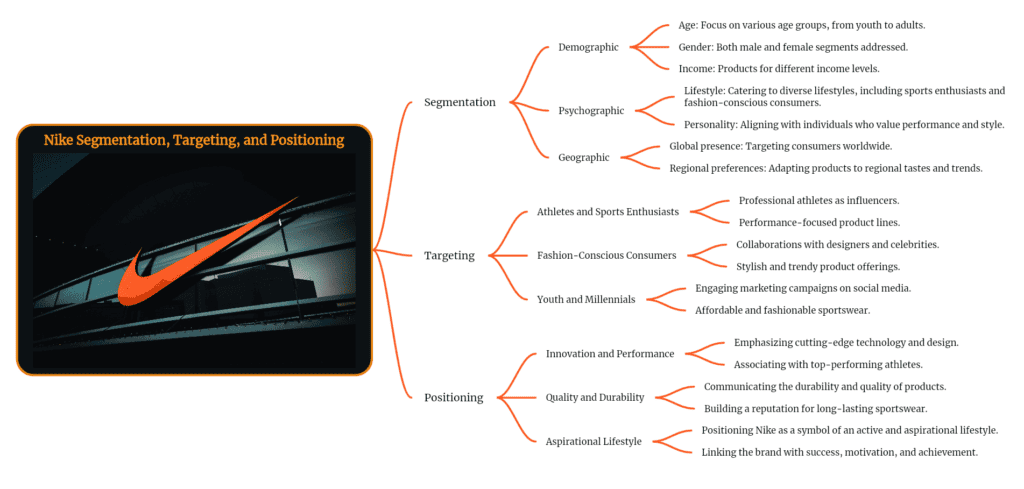
North America: A Core Market with Diverse Preferences
According to Statista , North America remains Nike’s largest and most established market, accounting for over 44% of its total revenues. This region comprises a diverse population with varying athletic preferences and lifestyles. To cater to this diverse audience, Nike employs localized marketing campaigns that resonate with local trends and cultural nuances . For instance, the company has partnered with prominent NFL and NBA athletes to connect with sports enthusiasts in the United States and Canada.
China: Surging Demand with Cultural Sensitivity
China has emerged as a significant market for Nike, driven by a growing middle class with an increasing interest in fitness and sports (Ko et al., 2012). To penetrate this market, Nike has adapted its products and marketing strategies to align with Chinese cultural preferences . For example, the company has introduced products that incorporate traditional Chinese design elements, such as the use of red and gold colors. Nike has also partnered with Chinese celebrities and influencers to promote its products and connect with local consumers.
Western Europe: A Market of Established Athletics
Western Europe, with its rich sporting heritage and passion for athletic performance, has been a key market for Nike. The company has tailored its products and marketing campaigns to appeal to the region’s discerning consumers. For instance, Nike has partnered with European soccer clubs and athletes to leverage their popularity and enhance brand recognition . The company has also developed products specifically designed for European consumers, considering factors such as weather conditions and athletic preferences.
Localized Marketing for Global Reach
Nike’s success in these diverse markets is attributed to its strategic approach to localization . The company recognizes that simply translating marketing materials and products into different languages is not enough. It actively engages with local communities, understands their cultural nuances, and adapts its messaging and products accordingly. This localized approach enables Nike to connect with consumers on a deeper level and build a strong brand presence in each market.
Product Development Tailored to Local Needs
Nike’s product development process is also guided by market segmentation and targeting. The company recognizes that consumers in different regions have varying needs and preferences. For instance, Nike has developed lightweight and breathable apparel for hot and humid climates, while also offering waterproof and insulated gear for colder regions . This focus on adapting products to local conditions has been instrumental in Nike’s global success.
Nike’s Global Market Segmentation Strategy: Achieving Omnipresence
Nike’s ability to segment and target global markets has been instrumental in its expansion and dominance. By understanding the specific needs and preferences of consumers in each region, the company has tailored its marketing campaigns, products, and distribution strategies accordingly . This localized approach has allowed Nike to connect with consumers on a deeper level, foster brand loyalty, and achieve omnipresence across the globe.
Nike’s global success has been fueled by a sophisticated and multifaceted marketing and distribution strategy that encompasses both physical and digital channels . The company leverages its extensive network of retail stores, strategic partnerships with wholesalers and distributors, and innovative digital marketing tactics to connect with consumers worldwide and drive sales.
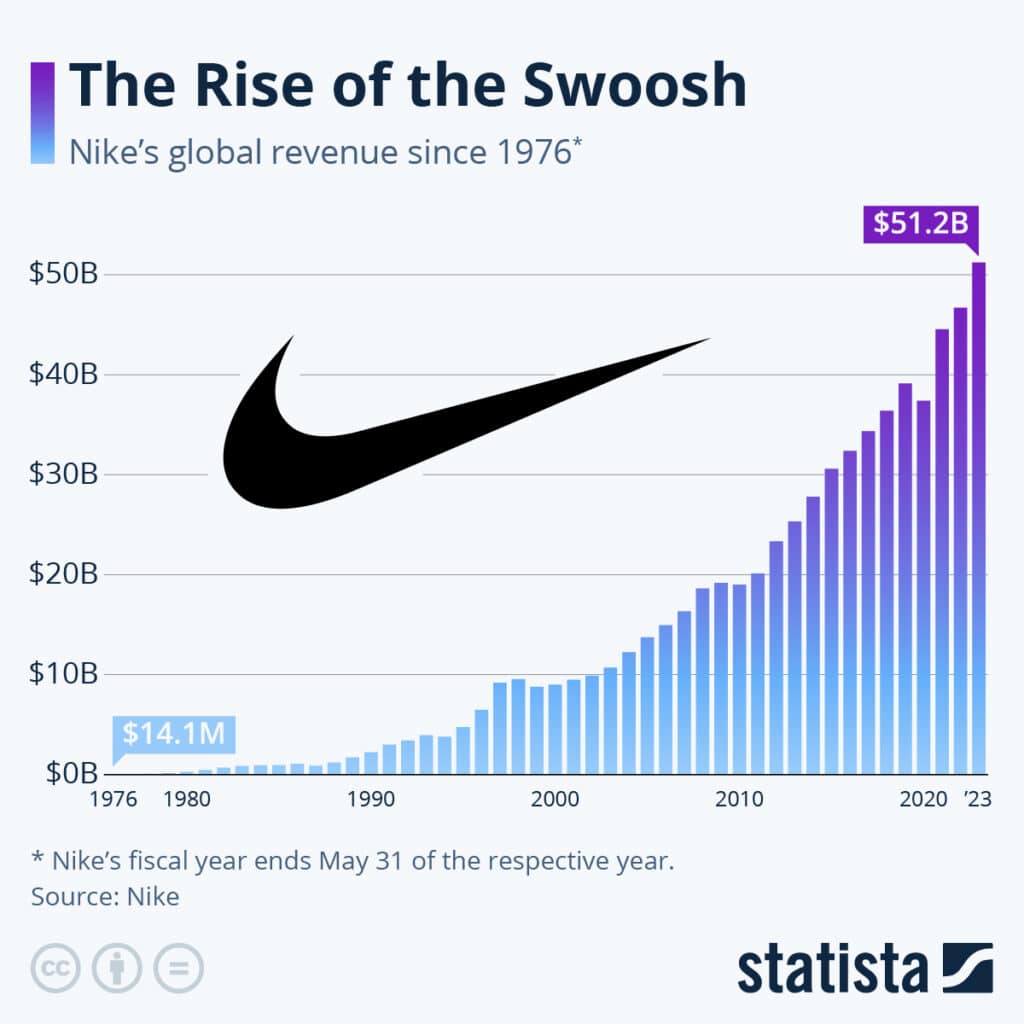
Direct-to-Consumer Approach: A Gateway to Customer Connection
Nike’s commitment to a direct-to-consumer (DTC) approach has been instrumental in its global expansion. The company operates over 1,000 retail stores in over 190 countries, as per Statista , providing a direct connection with consumers and allowing for personalized customer experiences . These stores serve as experiential hubs, showcasing Nike’s latest products and engaging with customers through various interactive features.
Partnerships with Wholesalers and Distributors: Reaching a Wider Audience
While Nike’s DTC strategy plays a crucial role, the company also collaborates with wholesalers and distributors to reach a broader market. This partnership enables Nike to expand its reach into smaller towns and cities, particularly in emerging markets . Wholesalers and distributors play a vital role in stocking Nike products in various retail outlets, providing consumers with convenient access to the brand’s offerings.
Leveraging Digital Platforms for Global Reach and Engagement
In today’s digital age, Nike has embraced the power of digital marketing to connect with consumers worldwide. The company utilizes a variety of online platforms, including its website, social media channels, and mobile apps, to reach a global audience and promote its products. Nike’s digital marketing efforts are data-driven , allowing the company to tailor its messaging and campaigns to specific demographics and interests.
Nike App: A Multifaceted Platform for Customer Engagement
Nike’s mobile app serves as a central hub for customer engagement. The app allows users to browse products, make purchases, track their workouts, and access personalized recommendations. Additionally, the app provides exclusive content, such as behind-the-scenes access to Nike athletes and events. This comprehensive platform has been instrumental in fostering brand loyalty and driving sales among Nike’s global customer base.
Nike’s Global Marketing and Distribution Strategy: A Winning Formula
Nike’s combination of direct-to-consumer stores, partnerships with wholesalers and distributors, and innovative digital marketing strategies has been a driving force behind its global success. By leveraging these channels effectively, Nike has been able to connect with consumers worldwide, build brand loyalty, and achieve market dominance in the sportswear industry . The company’s commitment to understanding local markets and adapting its messaging and products accordingly has been key to its success. As Nike continues to expand into new markets, its well-defined marketing and distribution strategy will be instrumental in its continued growth and global reach.
Nike’s global manufacturing strategy has been a cornerstone of its success, enabling the company to produce high-quality products at competitive prices . The company’s decision to outsource most of its manufacturing to overseas countries has been driven by several factors, including labor costs, raw material availability, and government policies.
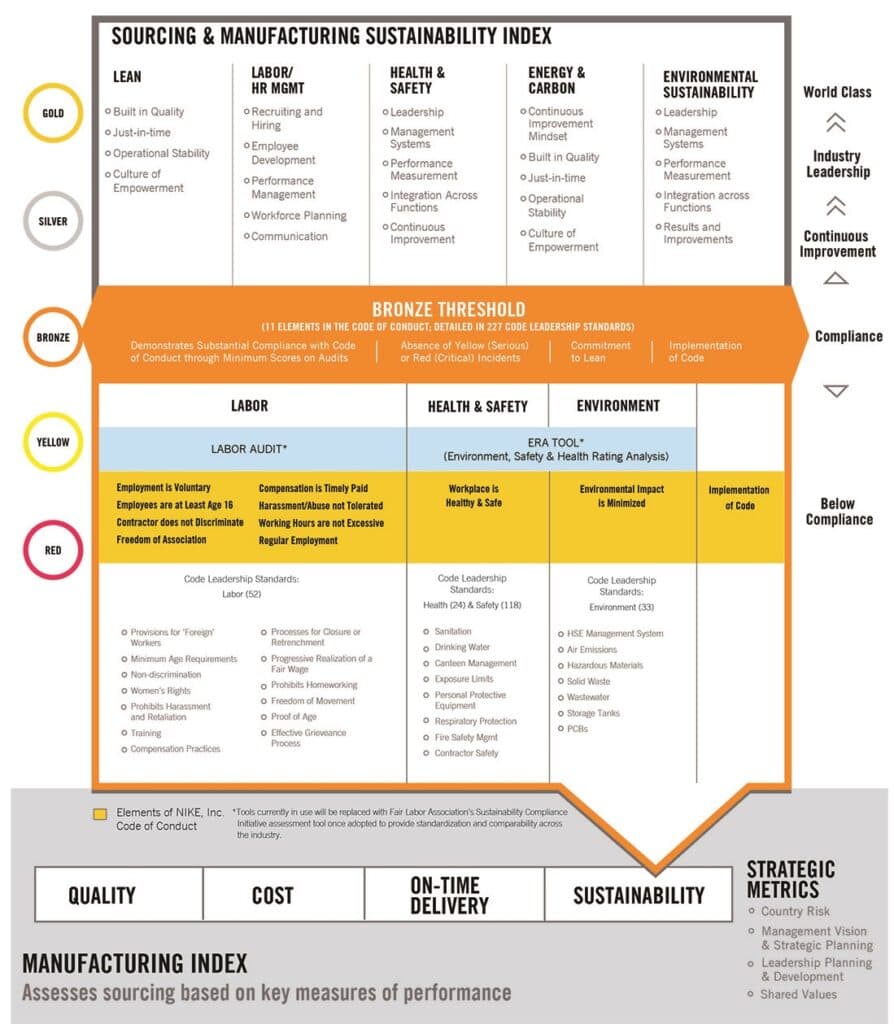
Outsourcing for Efficiency and Cost-Effectiveness
Nike’s outsourcing strategy stems from the desire to optimize production processes and reduce costs. By manufacturing its products in countries with lower labor costs, such as China and Southeast Asia, Nike can minimize labor expenses and maintain its competitive edge in the global market (Murphy & Mathew, 2012).
Access to Specialized Materials and Infrastructure
Outsourcing also provides Nike with access to specialized materials and infrastructure that may not be readily available in its home country. Many overseas manufacturing centers possess advanced manufacturing capabilities and expertise in producing high-quality athletic footwear and apparel (Lund-Thomsen & Coe, 2015).
Government Policies and Incentives
Government policies and incentives in various countries have also played a role in Nike’s outsourcing decisions. Many governments offer tax breaks, subsidies, and favorable labor regulations to attract foreign investment in their manufacturing sectors (Arora & Aggarwal, 2012).
Addressing Ethical Labor Concerns
Nike’s outsourcing practices have not been without scrutiny. The company has faced accusations of labor abuses, including low wages, excessive working hours, and unsafe working conditions in its overseas factories (Kell, 2016). In response to these concerns, Nike has implemented various initiatives to improve labor standards and ensure ethical practices in its supply chain.
Code of Conduct and Supplier Monitoring
Nike has established a comprehensive Code of Conduct that outlines its expectations for labor practices among its suppliers. The code prohibits forced labor, child labor, discrimination, and unsafe working conditions. Nike also conducts regular audits of its suppliers to monitor compliance with the code.
Fair Labor Association Partnership
In 1999, Nike joined the Fair Labor Association (FLA), an independent monitoring organization that promotes ethical labor practices in global supply chains . The FLA audits Nike’s suppliers and provides recommendations for improvement.
Community Initiatives and Worker Empowerment
Nike has also implemented community initiatives to improve the lives of workers and their families in its supply chain regions. These initiatives focus on education, healthcare, and economic development . Nike also encourages worker participation and empowerment through training programs and feedback mechanisms.
Nike’s Commitment to Ethical Sourcing
Nike remains committed to ethical labor practices and fair working conditions in its global supply chain. The company recognizes that ethical sourcing is not just a matter of legal compliance but also a strategic imperative for building a sustainable and responsible business . Nike’s efforts to enhance labor standards and empower workers are essential for maintaining its brand reputation and ensuring its long-term success in the global market.
Nike’s success as a global leader in the sportswear industry is not solely attributed to its innovative products and marketing strategies; it is also deeply rooted in its commitment to building a strong and talented workforce around the world . The company recognizes that its employees are its most valuable asset, and it invests heavily in their development and empowerment.

Investment in Local Talent
Nike places a high value on building the skills and capabilities of its local employees. The company recognizes that cultural understanding and local expertise are crucial for success in diverse markets . Nike’s global HR approach focuses on providing training, development opportunities, and mentorship programs to its employees worldwide.
Employee Training and Development
Nike invests heavily in training and development programs to equip its employees with the skills they need to excel in their roles. The company offers a variety of training programs, ranging from technical skills training to leadership development courses. Nike also encourages employee participation in professional development activities and encourages networking opportunities.
Empowering Employees for Success
Beyond training and development, Nike also fosters a culture of empowerment among its employees. The company believes in giving employees the autonomy and authority to make decisions and contribute to the company’s success . Nike encourages open communication, feedback mechanisms, and employee participation in decision-making processes.
Standards for Ethical Treatment of Workers
Nike’s commitment to ethical practices extends beyond its direct employees to its suppliers and factories in the global supply chain. The company adheres to a strict Code of Conduct that outlines its expectations for labor practices among its partners. The code prohibits forced labor, child labor, discrimination, and unsafe working conditions. Nike also conducts regular audits of its suppliers to ensure compliance with the code.
Collaboration with Ethical Organizations
In addition to its own Code of Conduct, Nike collaborates with organizations like the Fair Labor Association (FLA) to promote ethical labor practices in its supply chain. The FLA conducts independent audits of Nike’s suppliers and provides recommendations for improvement.
Nike’s Global HR Approach: A Catalyst for Success
Nike’s global HR strategy is a key pillar of its success. By investing in local talent, providing training and development opportunities, and fostering a culture of empowerment, Nike cultivates a workforce that is well-equipped to drive innovation, adapt to local markets, and contribute to the company’s global growth. Nike’s commitment to ethical labor practices and fair working conditions further reinforces its reputation as a responsible and sustainable corporate citizen . As Nike continues to expand its global footprint, its strong HR practices will remain essential for attracting, retaining, and developing the diverse talent required to achieve sustainable success in the ever-evolving global marketplace.
As a global leader in the sportswear industry, Nike recognizes its responsibility to go beyond profit and contribute to a more sustainable and equitable world. The company has made significant strides in integrating social responsibility and sustainability into its business practices, demonstrating its commitment to making a positive impact on the communities and environments it touches .

Minimizing Environmental Impact: A Sustainable Future
Nike has taken concrete steps to reduce its environmental footprint, aligning with its vision of “ Move to Zero ” by 2040. The company has set ambitious goals to achieve zero carbon emissions from its operations and supply chain, zero waste to landfill, and 100% sustainably sourced materials.
- Energy Efficiency: Nike has implemented energy-efficient practices in its facilities, including installing LED lighting, optimizing HVAC systems, and utilizing renewable energy sources.
- Materials Innovation: The company is constantly exploring innovative materials that reduce environmental impact, such as recycled polyester and organic cotton.
- Waste Reduction: Nike has implemented waste reduction initiatives across its operations, including recycling, composting, and reducing packaging.
- Supply Chain Sustainability: Nike is working with its suppliers to implement sustainable practices, such as reducing water consumption and adopting cleaner production processes.
Supporting Social Causes: Impacting Communities
Nike’s commitment to social responsibility extends beyond environmental sustainability to encompass initiatives that empower communities and address social issues. The company supports a range of causes, including education, economic empowerment, and gender equality .
- Education Initiatives: Nike has partnered with organizations like the Nike Foundation to provide educational opportunities for underserved communities, particularly girls in developing countries.
- Economic Empowerment: The company supports initiatives that promote entrepreneurship and job creation in underserved communities, such as microfinance programs and vocational training.
- Gender Equality: Nike is committed to gender equality and has implemented initiatives to promote women’s leadership and economic participation in sports and beyond.
Transparency in Reporting: Accountability and Stewardship
Nike is committed to transparency in reporting its environmental and social performance. The company publishes annual sustainability reports that detail its progress towards its sustainability goals and its efforts to support social causes. Nike also engages with stakeholders, including employees, customers, and investors, to communicate its sustainability commitments and progress.
Nike’s Global Social Responsibility and Sustainability Strategy: A Blueprint for the Future
Nike’s commitment to social responsibility and sustainability is not just a marketing ploy but a fundamental part of its business strategy. The company recognizes that sustainable practices not only benefit the environment but also contribute to long-term profitability, attract talent, and foster a positive brand reputation. As Nike continues to expand its global footprint, its commitment to social responsibility and sustainability will be crucial for maintaining its position as a leader in the sportswear industry and building a more sustainable future for all.
Navigating the Chinese Market: A Success Story of Adaptability
Nike’s expansion into the Chinese market serves as a compelling case study of the company’s ability to adapt its strategy to suit local preferences and cultural nuances. With a population of over 1.4 billion people and a rapidly growing middle class, China represents a significant market opportunity for global brands like Nike . However, entering this complex and diverse market also presents unique challenges and requires a deep understanding of local consumer behavior.

Challenges and Opportunities in the Chinese Market
Nike faced several challenges when entering the Chinese market, including:
- Establishing Brand Recognition: In a market dominated by local brands like Anta and Li-Ning , Nike had to establish its brand identity and gain recognition among Chinese consumers.
- Adapting Products to Local Preferences: Chinese consumers have different tastes and preferences for sportswear than those in Western markets. Nike had to adapt its product offerings to suit local preferences, such as incorporating traditional Chinese design elements.
- Building a Strong Distribution Network: Establishing a robust distribution network in China was crucial to reach a wide audience and provide a seamless shopping experience for Chinese consumers.
- Navigating Cultural Differences: Effective cross-cultural communication was essential for Nike to build relationships with Chinese partners, suppliers, and consumers.
Nike’s Strategies for Successful Market Entry
To overcome these challenges and capture market share in China, Nike implemented a multi-pronged strategy:
- Strategic Partnerships: Nike formed partnerships with local distributors and retailers to gain access to the market and build trust with Chinese consumers.
- Localized Marketing Campaigns: Nike tailored its marketing campaigns to resonate with Chinese consumers, using local celebrities, sporting events, and cultural references.
- Product Innovation: Nike developed products specifically for the Chinese market, incorporating traditional Chinese design elements and catering to local preferences.
- Digital Engagement: Nike embraced digital marketing, leveraging social media platforms and e-commerce channels to reach a wider audience and connect with Chinese consumers.
Nike’s Success in China: A Testament to Adaptability
Nike’s strategy proved to be successful, as the company has become a leading player in the Chinese sportswear market . In 2021, China accounted for over 20% of Nike’s global revenue (Ko & Zhang, 2022). Nike’s success in China highlights the importance of understanding local markets and adapting strategies to suit cultural preferences. The company’s ability to navigate the complexities of the Chinese market and establish a strong brand presence serves as an inspiration for other global brands seeking to expand into emerging markets.
Nike’s journey to becoming a global powerhouse is a testament to the company’s strategic approach to international expansion. By embracing adaptability, cultural sensitivity, and ethical business practices, Nike has successfully navigated the complexities of diverse markets , establishing a strong brand presence and achieving remarkable growth.
Key Takeaways from Nike’s Global Strategy
- Adaptive Pricing Strategy: Nike’s premium pricing strategy has been crucial in maintaining its brand image while also catering to a wider consumer base through tiered pricing and value-added services.
- Targeted Market Segmentation: Nike has effectively segmented global markets, understanding the specific needs and preferences of consumers in each region. This has enabled the company to tailor its marketing campaigns, products, and distribution channels to local tastes.
- Omnichannel Marketing Approach: Nike’s combination of direct-to-consumer stores, partnerships with wholesalers and distributors, and robust digital marketing has ensured a seamless customer experience across various channels.
- Global Manufacturing Strategy with Ethical Sourcing: Nike’s outsourcing approach to manufacturing has allowed for cost-efficiency and access to specialized expertise. However, the company has also prioritized ethical labor practices and fair working conditions, ensuring a sustainable supply chain.
- Commitment to Human Resource Development: Nike invests heavily in developing the skills and capabilities of its local employees, fostering a global talent pool that drives innovation and contributes to the company’s success.
- Global Social Responsibility and Sustainability: Nike’s commitment to environmental sustainability and social responsibility has earned the company a positive reputation and contributed to long-term profitability.
- Effective Cross-Cultural Communication: Nike has demonstrated a deep understanding of cultural differences, building relationships with local partners, suppliers, and consumers through effective cross-cultural communication.
Nike’s remarkable journey to global dominance is a testament to its strategic approach to international expansion , emphasizing adaptability, cultural sensitivity, and ethical business practices. As Nike continues to conquer new markets, Accelingo stands as a trusted partner, providing the professional translation services that are essential for success in diverse cultural landscapes.
Accelingo’s team of experienced linguists understands that effective global marketing goes beyond simply translating words; it’s about understanding the nuances of each culture, adapting your message to resonate authentically, and establishing a genuine connection with local consumers . Our culturally sensitive translation services empower you to replicate Nike’s success, forging deeper connections with global audiences and achieving sustainable growth in the international arena.
Partner with Accelingo and Experience the Nike Effect
Embrace culturally sensitive translation and unlock the true potential of your global expansion strategy . Let Accelingo be your trusted ally in navigating the complexities of diverse markets , just as Nike has successfully done. Together, we’ll help you translate your brand’s message into a language that resonates with local audiences, fostering trust, loyalty, and enduring success in the global marketplace.

Privacy Preferences
When you visit our website, it may store information through your browser from specific services, usually in the form of cookies. Here you can change your Privacy preferences. It is worth noting that blocking some types of cookies may impact your experience on our website and the services we are able to offer.
- All agencies in USA
- Los Angeles
- San Francisco
- Philadelphia
- All services in USA
- AI Marketing
- Digital Marketing
- Social Media Marketing
- Email Marketing
- Content Marketing
- All industries in USA
- Travel & Tourism
- Real Estate
- Fashion & Retail
- Media & Entertainment
- Food & Beverage
- Agency of the Month

- All agencies in the UK
- Bournemouth
- All services in the UK
- All industries in the UK

- All agencies in Canada
- All services in Canada
- Influencer Marketing
- All industries in Canada
- Travel Tourism
- All agencies in Australia
- All services in Australia
- PPC Marketing
- All industries in Australia
- Beauty & Cosmetics
- Hospitality

- All agencies in Europe
- All services in Europe
- Web Development
- All industries in Europe
- IT & Technology

- All agencies in Asia
- All services in Asia
- B2B Marketing
- All industries in Asia

- Agency News
- Marketing Resources
- Industry News

- Digital Ad Campaigns
- Case Studies
- Social Media Campaigns

- Marketing Blog
- Advertising
- Ecommerce Marketing

- Industrial Blog
- Fashion Marketing
- Sports Marketing
- Luxury Marketing
- Legal Marketing
- Healthcare Marketing

- Digital Marketing Tools
- Marketing Reporting Tools
- Digital Marketing Analytics Tools
- Email Marketing Tools
- Other Tools
- Social Media Management Tools
- Social Media Marketing Tools
- Social Media Analytics Tools
- Social Media Monitoring Tools
- Influencer Marketing Platforms
- Web Design Tools
- Landing Page Builders
- UI / UX Design Tools
- Website Builder Software
- Front End Development Tools
- Team Management Softw...
- Project Management Tools
- Agency Management Software
- Productivity Management Software
- Time Tracking Tools
- Sales Tools
- Sales Automation Tools
- Product Feed Management Tools
- Sales Enablement Tools
- AI Design Tools
- AI Content Tools
- AI Analytics Tools
- AI Marketing Tools
- Performance & Software
- Website Optimization Tools
- Content Delivery Network Tools
- Cybersecurity Software
- Web Accessibility Tools
Market your SaaS Tools and reach digital agencies & marketing professionals worldwide.
- All Categories in USA
- Artificial Intelligence Events
- Design & Development Events
- Digital Marketing Conferences
- Social Media Events

GYDA Summit 2024

Digital Marketing Solutions Summit 2024
Submit your exclusive marketing event today.
Submit your event to reach a wider audience! Whether it's digital marketing, AI, or any related theme, we would love to help spread the word out!
- All Categories in UK
- All Categories in Canada
- All Categories in Australia
- All Categories in Europe
- All Categories in Asia
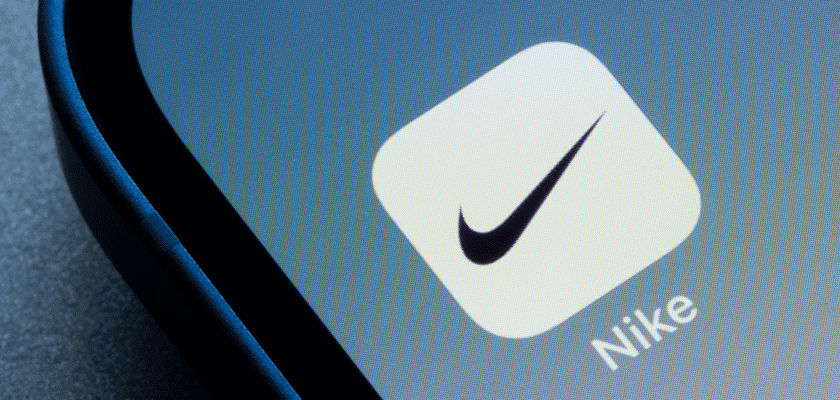
9 Inspiring Nike Marketing Campaigns Fueled by Powerful Digital Strategies
The world-famous sportswear manufacturer Nike is currently at the peak of its marketing strategy game. But as a leading sports apparel brand, its huge success isn’t a surprise. Each one of Nike’s campaigns tells a different story and takes the audience on a journey, so we gathered some of the best Nike campaign examples to date to inspire your own.
Nike’s digital marketing strategy is supported by brilliantly successful ads. The company is not only selling products, but they are also selling the emotional benefits of the products. In short, they are selling the aspiration. That’s the reason why the brand shows the promoted product to the audience only in few of their campaigns: They appeal to emotions instead.
Building Meaningful Stories and Taglines
Nike marketing campaigns are really effective. They focus on creating meaningful stories to build a loyal fan base. The brand truly triumphs in inducing emotion in the customer through “emotional branding”. Their carefully crafted ads aim to evoke particular feelings and put Nike products up higher in the eyes of the customers. Part of this emotional connection is fostered through Nike social media posts, where posts are carefully designed to resonate with their audience on a personal level.
Throughout its history, Nike is known to tell its stories with a traditional narrative of a hero who overcomes hardship, never gives up fighting and leads to glory at the end. In most cases, the enemy says to the hero that “You can’t”, but the tagline comes to the rescue, saying “Just Do It”.
Distribution Strategy
It’s unquestionably important to have your customers talking about your brand. Nike creates exciting experiences that people would talk about and share with each other. Nike also has subsidiaries like Converse, Jordan, and Hurley. Different brands help them to grow their customer base.
Distribution strategy is another key component of Nike’s digital marketing strategy. Through various channels such as retailers, e-commerce sites, resellers and supermarkets, Nike distributes their products worldwide to different segments of customers. Moreover, Nike uses social media platforms to amplify their reach, making their innovative campaigns accessible through engaging social media posts.

Targeting Strategy and Mission
As it’s not only a footwear brand and is present in sports equipment, clothing, and many other categories, Nike often uses separate targeting strategies and marketing campaigns for different product categories to remain at the top. It also regularly updates its offerings using cutting-edge technologies like HyperAdapt in its product lines to always be the newest and the best in the market.
Nike’s mission is “To bring inspiration and innovation to every athlete in the world” and, as we’re all familiar with, its tagline is “Just Do It”. It has a strong product portfolio in various interrelated business segments to retain its customers and provide a large catalog of products.
Financial Statistics
Nike’s digital marketing strategy has proven to bring great victory for the brand. Nike is the most valuable global apparel brand , for the 7th consecutive year in 2022. It holds the largest market share with 15% in sportswear as of 2022. The company‘s financial record is also strong: Nike was valued at more than 33 billion U.S. dollars in 2022 , with an increase of nearly three billion U.S. dollars from the previous year.
9 of Nike’s Marketing & Advertising Campaigns
As we mentioned above, highly creative and emotional Nike ad campaigns are playing a determinant role in Nike’s digital marketing strategy.
We have chosen 9 of these brilliant digital marketing campaigns of Nike from the latest years to show you how the brand attained success:
Nike x Fortnite: Airphoria
Nike’s latest venture into the digital realm, “Airphoria,” showcases an innovative blend of gaming and fashion within Fortnite, a move that’s been highly celebrated across Nike social media channels. Launched on June 20, 2023, Airphoria represents a pioneering immersive gaming experience, merging the iconic Nike Air Max design elements with Fortnite’s dynamic environment. This collaboration, highlighted in Nike social media posts, underscores the brand’s commitment to pushing the boundaries of sports fandom into the future, leveraging a longstanding partnership with Epic Games. Nike’s strategic use of social media to promote Airphoria in Fortnite exemplifies the brand’s adeptness at leveraging digital platforms to enhance fan engagement and connect with a global audience.
Bu gönderiyi Instagram'da gör Nike (@nike)'in paylaştığı bir gönderi
Nike: A Feel For Every You
The Nike ad titled “A Feel For Every You” is a vibrant and dynamic representation of Nike’s innovative approach in their digital marketing campaigns. Nike’s ad campaign showcases the diversity and versatility of fitness, emphasizing that it means different things to everyone. The ad highlights the redesigned Nike Leggings, which offer premium comfort and support with various options in lengths, waist heights, and sizes, ensuring a fit for every mood and individual.
This campaign is a quintessential example of Nike’s digital marketing strategy, focusing on personalization and inclusivity. It aligns with Nike’s mission to inspire and innovate for every athlete in the world, underlining their belief that if you have a body, you are an athlete.
Nike: The Footballverse
Nike has done it again in their series of extraordinary World Cup ads, this time titled ‘’The Footballverse’’. Their 2022 FIFA World Cup campaign made headlines when aired and for good reason. They elaborated on a question many football fans have in mind: What would happen if the best of the best faced each other? The short film features 14 famous football players past and present such as Christiano Ronaldo, Edgar Davids, Kevin De Bruyne, Kylian Mbappe, Leah Williamson, Phil Foden, Carli Lloyd, Alex Morgan, CR Jr., Ronaldo Nazario, Virgil van Dijk, Sam kerr, Shane Kluivert and Ronaldinho and lets them play against one another in a visually stunning setting, to prepare for the World Cup in Qatar.
Nike advertising strategy always includes creating engaging content that resonates with football lovers all around the world while promoting their latest products in a creatively-thought campaign. The ultimate battle of all football generations is addressed in the Footballverse ad and the question is: who is better? A worldwide team of scientists at a secret lab located somewhere in Switzerland deciphers a code that will end any discussion. Watch the ad below!
Nike: Play New
In 2021, Nike launched a new ad campaign titled “Play New”. Created by Wieden+Kennedy Portland , the campaign emphasizes the joy of trying something new. Essentially, the film shows individuals trying a sport, and failing.
Nike is largely associated with consumers who actively take part in sports and its most famous ads feature sports superstars. This campaign, on the contrary, lets the regular customer shine. Just like the theme of the ad not being about winning and conquering, but failing at something.
Nike’s marketing campaign underlines the brand’s hyper-motivational approach, and the message is relatable to those who try but are not the world’s best – a great portion of Nike’s customer base. By addressing the actual users, Nike created an ad campaign that’s honest and resonates well with its base. It’s speaking to segments of its audience in a language they’ll be able to relate to, strengthening the bond between the brand and the customer even more.
No matter the size, brands partner with top sports marketing agencies to craft effective narratives in their marketing campaigns. If you’re also seeking an agency to collaborate with just like Nike did with Wieden+Kennedy Portland, we recommend finding one that best suits your needs and budget.
Nike Air Jordan and Facebook Messenger Bot Collaboration
This unique Nike social media campaign is born from the collaboration between Nike Air Jordan and Facebook Messenger . For creating this Nike social media campaign, the brand teamed up with conversational AI platform Snaps .
The project consists of a channel that delivers content from Air Jordan blog, Jordan.com, and Jordan News weekly to the users. The system is divided into 3 categories: Air Jordan, shop and watch.
The Messenger bot enables two-way conversations from Nike aficionados and gives people a unique opportunity to connect with Nike’s Air Jordan. The brand claims the bot is generating open rates of 87%, far outpacing the typical 15% to 20% we’re used to from email campaigns.
Users can even customize the notification time. The bot generates subtle responses to specific phrases, and it can lead readers to the Collection website with an external link and then help them to turn back to Messenger again. Unique campaigns using social media as the medium such as this one help Nike create new ways to integrate its products into the daily lives of its customers.
Nike: Reactland
To promote the launch of its cutting-edge new running shoes, Epic React, Nike developed a rich digital marketing campaign. The campaign hosted channels including mobile, social media, video and website.
The most striking element of the campaign is its immersive Reactland initiative that transports users into a virtual video game by creating their 8-bit avatars. With this project, users can experience the brand’s latest sole cushioning technology.
The campaign created by Wieden+Kennedy Shanghai masterfully combines social media engagement, immersive experiential marketing and gamification.
Nike Unlimited Stadium
Have you ever raced with your own shadow? “ Nike Unlimited Stadium ” makes that possible. Nike has constructed the world’s first full-sized LED racing track in Manila, Philippines. The runners can compete with their LED avatars with the help of a sensor attached to their shoe in a 200-meter-long LunarEpic running shoes’ sole-shaped track. This great project of Nike was conceptualized by BBH Singapore and digitally promoted by Birdman.
Nike: The Wonder Woman of Vogue
We continue our Nike digital marketing campaigns with one in support of LGBTQ+ rights. The company has collaborated with a transgender Vogue artist and ballroom dancer Leiomy Moldonado for this short film to promote the #BeTrue collection and also to celebrate Pride Month. The video is produced by Public Record and directed by Daisy Zhou.
The project celebrates voguing, – a dance move previously performed by queer and transgender individuals in 1960s Harlem. The clip includes narration by artist Precious Angel Ramirez.
Moreover, the 60-second long ad pays homage to New York’s underground “ballroom scenery” – a community that was created by impoverished Black and Latino LGBTQ+ youth as a place to safely express themselves and freely perform their dance.
Nike: Equality
In 2017, Nike has launched a 90-second spot from Wieden + Kennedy Portland. The ad encourages athletes to respect and be fair to each other on and off the field. The ad directed by Melina Matsoukas features stars from the sports world like LeBron James, Kevin Durant, Serena Williams, Megan Rapinoe, Dalilah Muhammad, and Gabby Douglas.
The soundtrack “A Change Is Gonna Come” is from Alicia Keys. The message is centered on using Nike’s voice and the power of sport to inspire people to take action, and effect change.
There are many outstanding campaigns to discover in terms of sports marketing , and some of them belong to one of Nike’s lifelong competitors: Adidas. Check out Adidas’ digital marketing strategy for more inspiration.
Share this post

Related Posts

Subscribe to keep up with fresh news and exciting updates. We promise not to spam you!
This website uses cookies. Continued use of this website indicates that you have read and agree to our Terms & Conditions and Privacy Policy .
- Sign In Sign Up
Home / Marketing / Nike Marketing Strategy: How They Do It And You Can Too!
Nike Marketing Strategy: How They Do It And You Can Too!

Simon Sinek, a British-American author and inspirational speaker, once said: “People don’t buy what you do; people buy why you do it.”
Unquestionably, this idea is a perfect summation for our case study today, the Nike marketing strategy.
A tagline that checks all boxes (literally) of brand recognition, “Just do it,” became three words that shifted storytelling paradigms in ads.
So, how do they do it? Also, how did they turn a humble shoe store in Oregon into a multi-billion dollar company with global recognition?
Is it the famous athletes, sponsoring sports teams, large-scale advertising, or just the magic of their distinguished swoosh logo?
In this blog, we’ll go through the essential elements of this success story with a complete breakdown of Nike marketing strategies!
Related: 5 Blogs You Need To Follow To Up Your Marketing Game
About Nike Brand

Source: Pexels
Nike, Inc. is an American multinational corporation that specializes in the design, production, and global marketing of athletic footwear, apparel, and accessories.
It stands as a prominent global player, catering to the diverse needs of athletes and sportswear enthusiasts worldwide.
The brand’s commitment to quality, style, and endorsement by elite athletes solidifies its status as a premier choice for sportswear clothing fans.
Related: Secrets Behind Famous Brand Logos You Didn’t Know
Nike’s History

Source: Business Insider
Nike was founded in the year 1964 as Blue Ribbon Sports by the University of Oregon coach, Bill Bowerman, and his student, Phil Knight.
Here are some important milestones in Nike’s history:
- 1964: Phil Knight and Bill Bowerman founded Blue Ribbon Sports, which later became Nike.
- 1971: The company was renamed Nike.
- 1979: Nike introduced its patented “Air” technology with the new Tailwind shoe.
- 1980: Nike completed its IPO with a price of 18 cents a share.
- 1984: Nike signed Michael Jordan, launching Air Jordan.
- 1994: Nike inked a deal with LeBron James.
- 1996: Nike launched the first Nike website.
- 2005: Nike introduced the Nike+ running system.
- 2012: Nike launched its “Find Your Greatness” campaign during the London Olympics.
- 2018: Nike released the “Just Do It” campaign starring Colin Kaepernick which sparked controversy and conversation about social justice issues.
Related: 5 Epic Ingredients For A Successful Social Video Marketing Strategy
Brand Mission and Values

Source: Nike
In their own words, Nike aims to “bring inspiration and innovation to every athlete in the world.” In fact, in the true spirit of fair sportsmanship, they believe in delivering their products to a diverse and inclusive community.
Moreover, they aim to design for comfort while stepping towards a more sustainable future, in addition to their global community outreach initiatives.
The result?
“As of October 2023, Nike boasts a market capitalization of $154.93 Billion, ranking it as the 66th most valuable company worldwide by market capitalization in our records.” – CompaniesMarketCap .
Nike Marketing Strategy

Source: Pexels
Now that you have a grasp of the brand, its history, and brand values, let’s delve into an in-depth exploration of Nike marketing strategies.
Goals and Objectives – Nike Company Marketing Strategy

Source: Nike
Here are some goals and objectives of the marketing strategy of Nike:
- Increase brand awareness , expand customer base, and drive sales.
- Empower audiences through sport, promoting emotive messages of strength, equality, and diversity.
- Use the four Ps of the marketing mix – Product, Price, Promotion, and placement – to determine its marketing mix.
- Implement sustainable manufacturing practices and ethical labor practices to address challenges surrounding labor practices and environmental concerns.
- Building community by investing in organizations dedicated to economic empowerment, education, and equality.
- Inspire unity among the current generation through sports and encourage an active lifestyle, empowering them to reach their potential future.
Related: How Email Personalization Can Up Your Marketing Strategy
Target Audience – Nike Marketing Strategy

Source: Start.io
Understanding the marketing strategy of Nike involves analyzing its diverse target audience segments. The strategy excels in connecting with various consumer groups. Here’s the target audience for Nike marketing strategy:
- Professional and casual runners
- Sports enthusiasts
- Women in sports
- Young athletes
- Advocates of sustainability
This comprehensive and inclusive approach contributes significantly to Nike Company marketing strategy success, resonating with a broad spectrum of consumers, from athletes to sustainability advocates.
Challenges – Nike Marketing Strategy
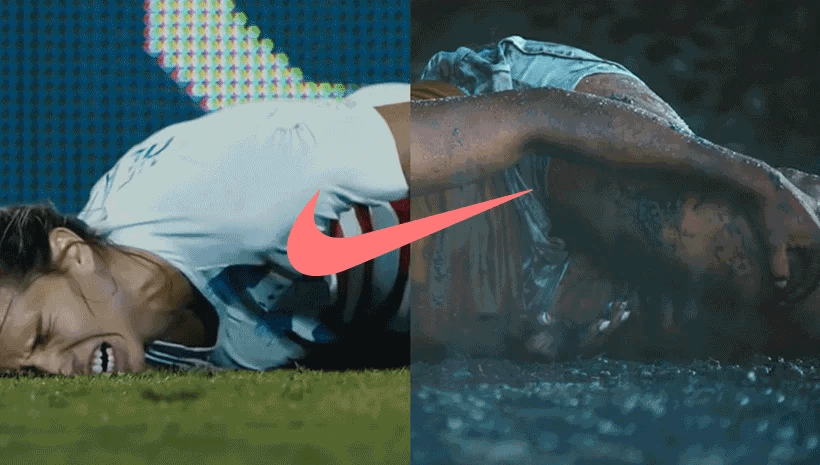
Source: The Slice
Here are some of the challenges faced by Nike’s marketing strategy:
- High-level competition with Adidas, Reebok, and other companies with similar product lines and common target markets.
- Limited exports of Nike products due to legal restrictions can be one reason for fewer sales or revenues.
- High cost of advertising and promotional strategies.
- The negative influence of celebrities.
- Less diversified strategies.
Related: 28 Instagram Tools To Boost Your Instagram Marketing Strategy In 2023
Solutions and Approaches – Nike Marketing Strategy
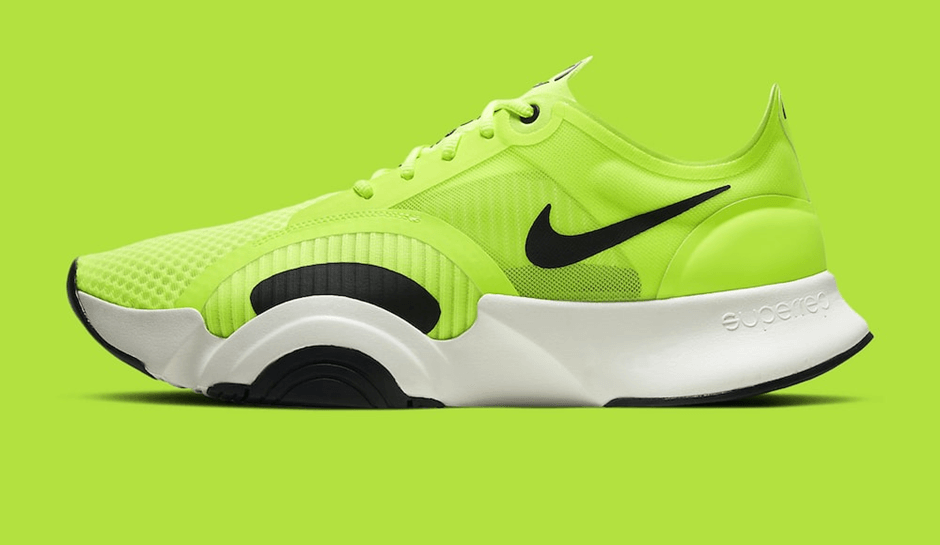
Source: Unsplash
Nike has implemented several solutions and approaches to addressing the challenges it has faced over the years:
1. Sustainable Manufacturing and Ethical Labor Practices
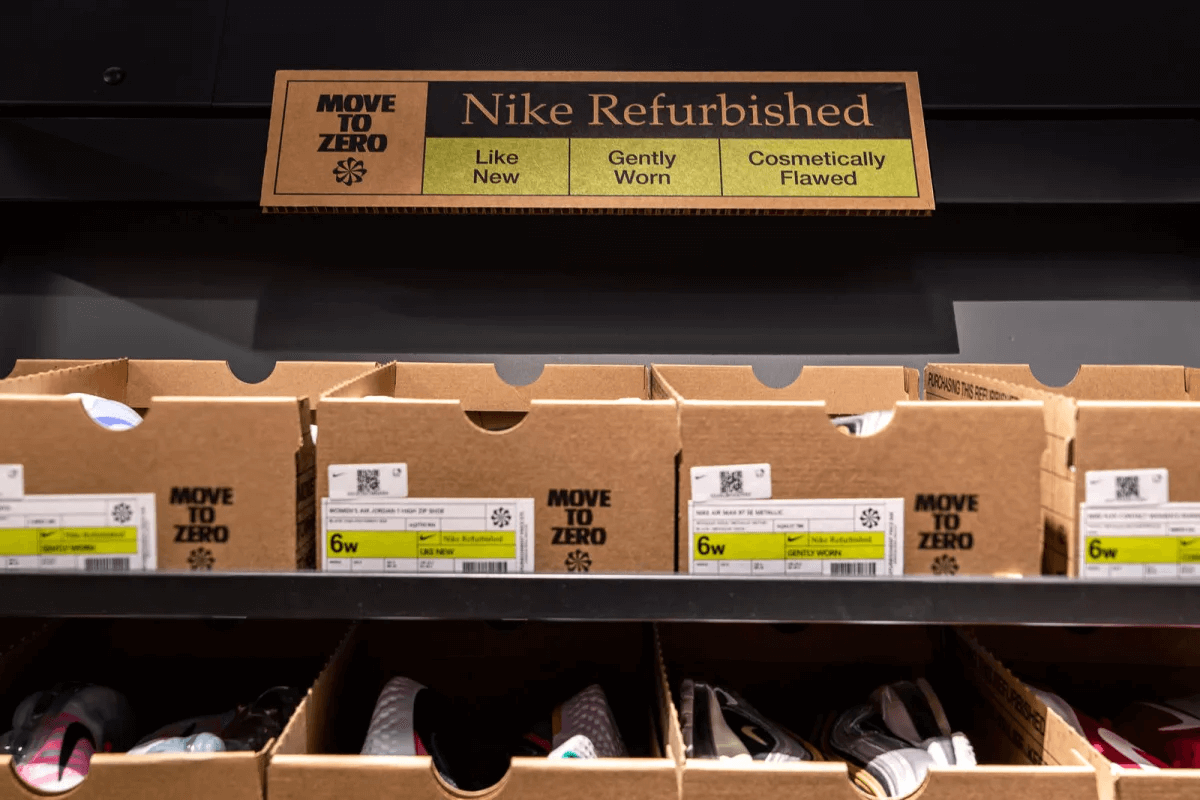
Nike has implemented sustainable manufacturing practices and ethical labor practices to address controversies surrounding labor practices and environmental concerns.
The company has taken several steps to reduce its carbon footprint, including using recycled materials in its products and reducing waste in its manufacturing processes.
They have also implemented ethical labor practices to ensure that workers are treated fairly and that working conditions are safe and healthy as per Nike marketing strategy.
2. Product Line Diversification
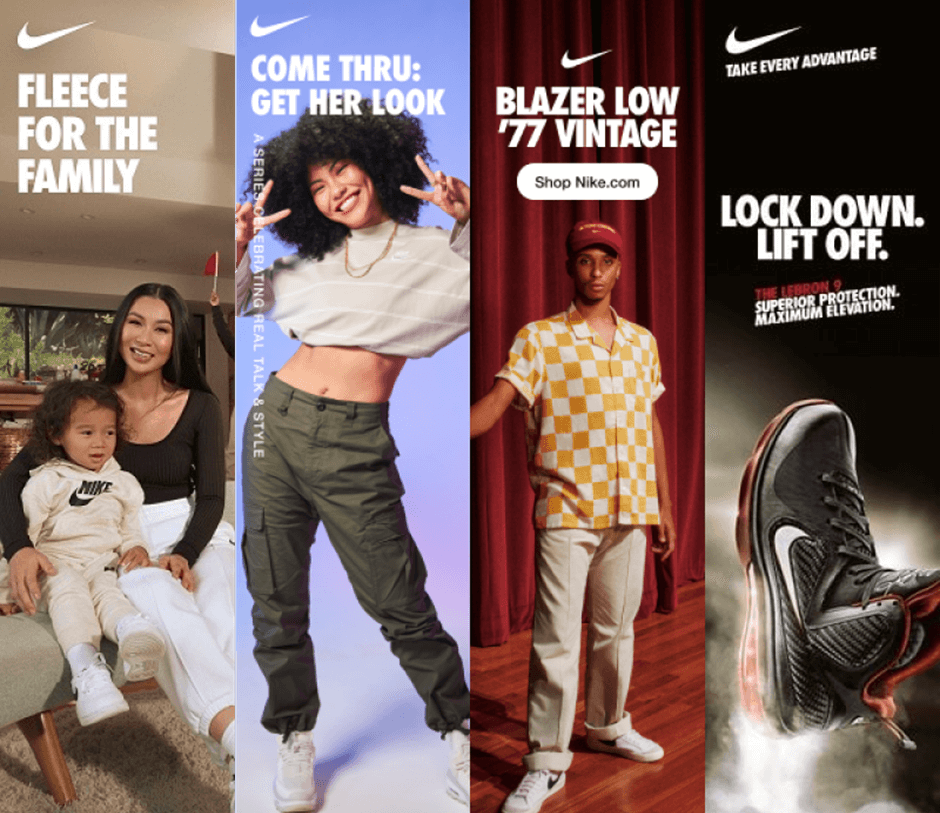
Source: Lili
Nike has diversified its product line to include non-athletic consumers interested in fashion and style. The company has expanded beyond its traditional athletic wear to include lifestyle products such as sneakers, clothing, and accessories.
This has allowed Nike to reach a wider audience and appeal to consumers who are interested in fashion and style.
3. Social Media Marketing
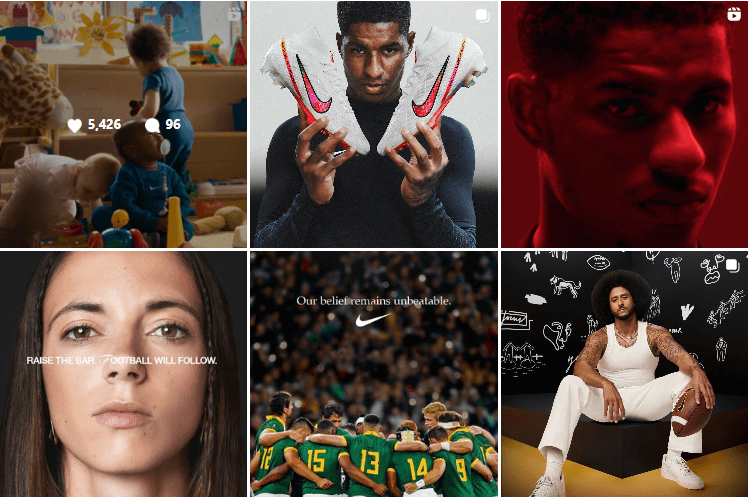
Source: Instagram
Nike has used social media to connect with its customers and build brand loyalty. The company has a strong presence on social media platforms such as Instagram, Twitter, and Facebook, where it shares content related to its products, athletes, and events.
By engaging with its audience, the brand fosters a deeper connection and builds loyalty . The brand often encourages its followers to share their own stories and experiences, using hashtags as a part of Nike digital marketing strategy. It helps to spark conversations and create a sense of community.
Related: 13 Steps to Execute an Inbound Marketing Strategy to Grow Your Business in 2023
4. Content Marketing
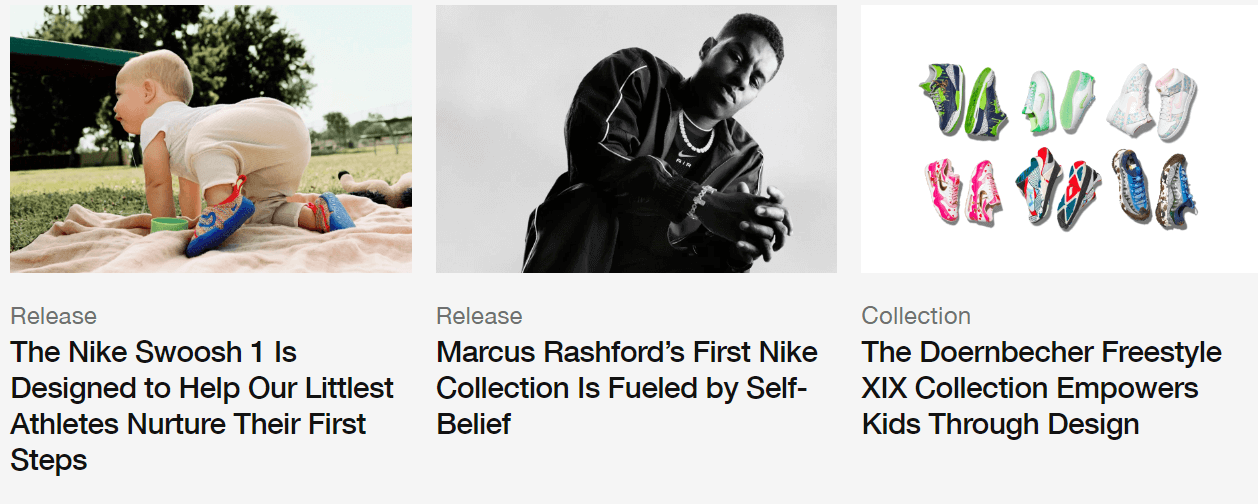
Nike has leveraged content marketing before product development to build a customer base. In the marketing strategy of Nike, content marketing came before the product. The customer base was built before the idea of the product was even thought of.
Nike sold shoes only when customer awareness was shifted from Unaware to Solution-aware. This approach helped Nike build a strong brand identity and establish itself as a leader in the sportswear industry.
5. Storytelling and Emotional Branding
Nike: What will they say about you?
Nike’s marketing campaigns are known for their storytelling approach that sells touching stories instead of amazing products.
The company’s marketing campaigns often focus on the stories behind its products, such as the journey of an athlete or the inspiration behind a design.
By telling these stories, Nike creates an emotional connection with its customers that goes beyond the product itself.
Related: 5 Evergreen Marketing Strategies That Never Fail
Examples of Nike’s Marketing Strategy That You Can Follow
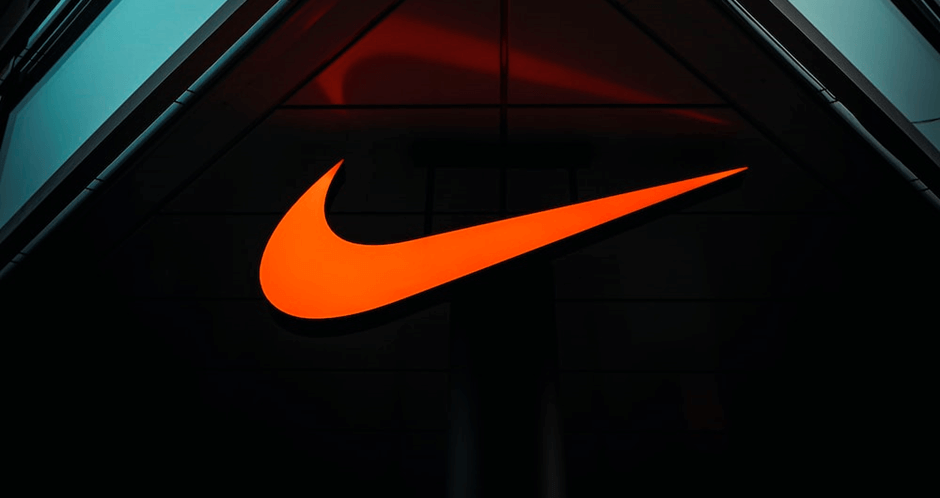
Here are some examples of Nike marketing strategies that you can use for your brand:
1. Athlete Endorsements
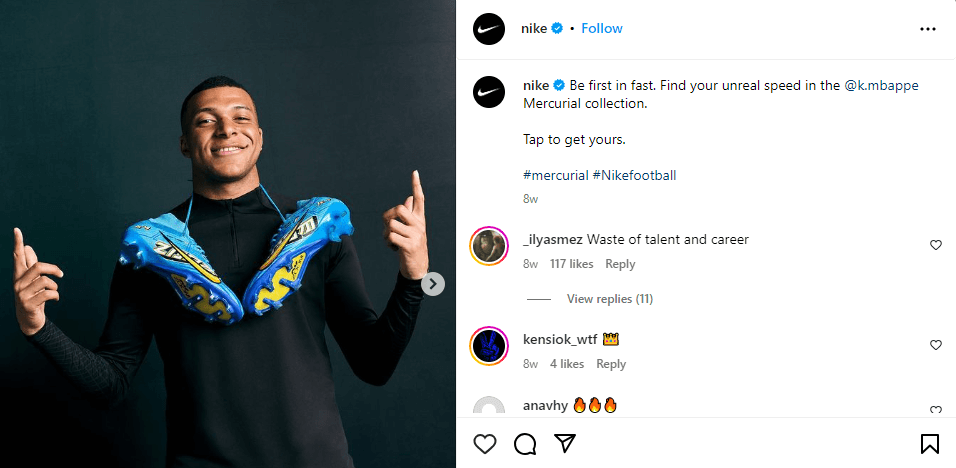
Continual partnerships with high-profile athletes like Michael Jordan, Kylian Mbappe, and Serena Williams contribute to Nike’s brand visibility and influence, shaping perceptions and driving sales.

2. Focus on Customer Relationships

Nike emphasizes the importance of building strong customer relationships by offering timely customer support and providing social proof.
3. Use of Viral Trends

Source: Complex
Nike has capitalized on viral trends such as the “Ice Bucket Challenge” as a part of Nike digital marketing strategy to promote its products and raise awareness for charitable causes.
Related: AI Ad Generators That Will Fast-Track Your Next Marketing Campaign
4. Emphasis on Innovation
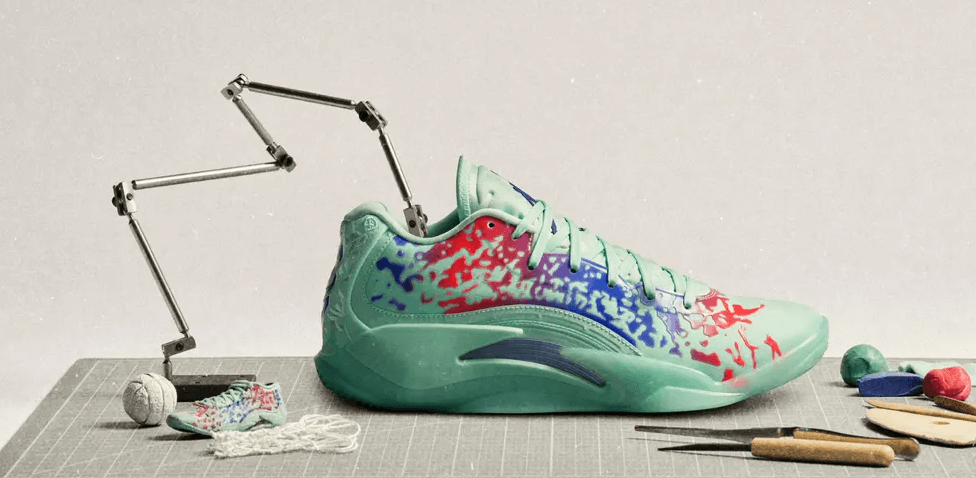
Innovation is one of Nike’s core values. The company has been at the forefront of developing new technologies such as Flywire and Dri-FIT that enhance the performance of its products as a part of Nike marketing strategy.
5. Use of Influencer Collaborations
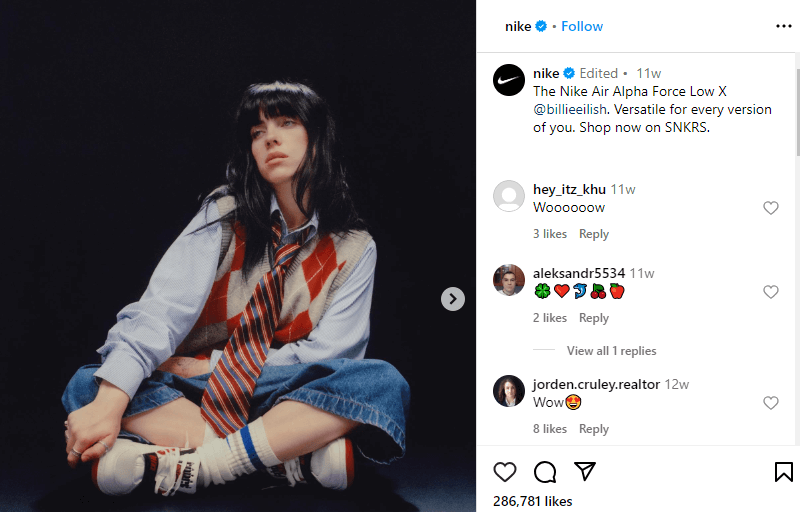
Nike has collaborated with influencers such as Billie Eilish and Travis Scott to promote its products on social media platforms like Instagram.
6. Limited Edition Releases
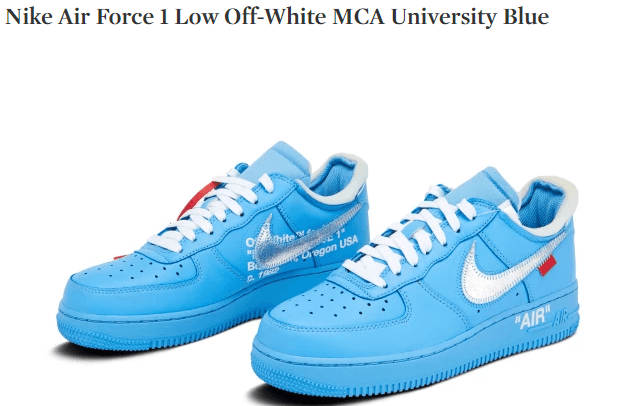
Source: Sotheby’s
Nike’s marketing strategy of limited edition releases, such as the Air Jordan series, or exclusive collaborations like the Off-White collection by Virgil Abloh, creates hype and scarcity, driving demand and brand exclusivity.
7. Sponsorships and Sports Events
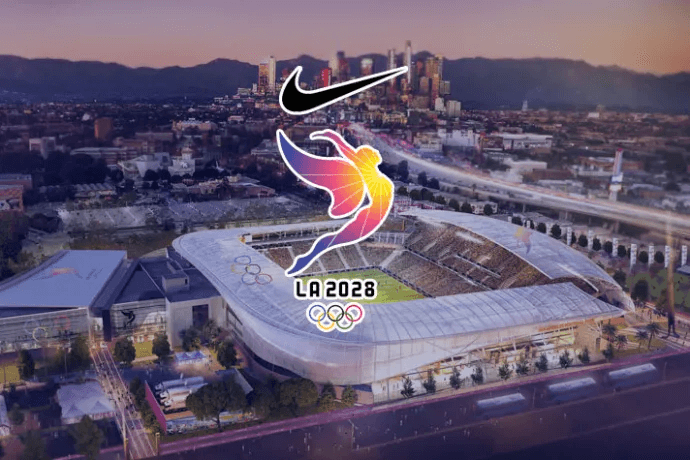
Source: Inside Sport
Nike’s support and sponsorship of major sports events like the Olympics and strategic partnerships with sports leagues globally amplify brand exposure and engagement.
Related: Using Simplified’s AI To Create AIDA Framework For Your Next Marketing Campaign
8. Community Engagement

Source: Gear Patrol
Initiatives like the Nike Run Club and Nike Training Club apps foster a sense of community among fitness enthusiasts, encouraging engagement and loyalty beyond just selling products.
9. Social Media Campaigns
Nike / Dream Crazy (United States)
Nike’s impactful and viral social media campaigns, like the “Dream Crazy” ad featuring Colin Kaepernick, create conversation, emotional resonance, and visibility across digital platforms.
10. Brand Activism
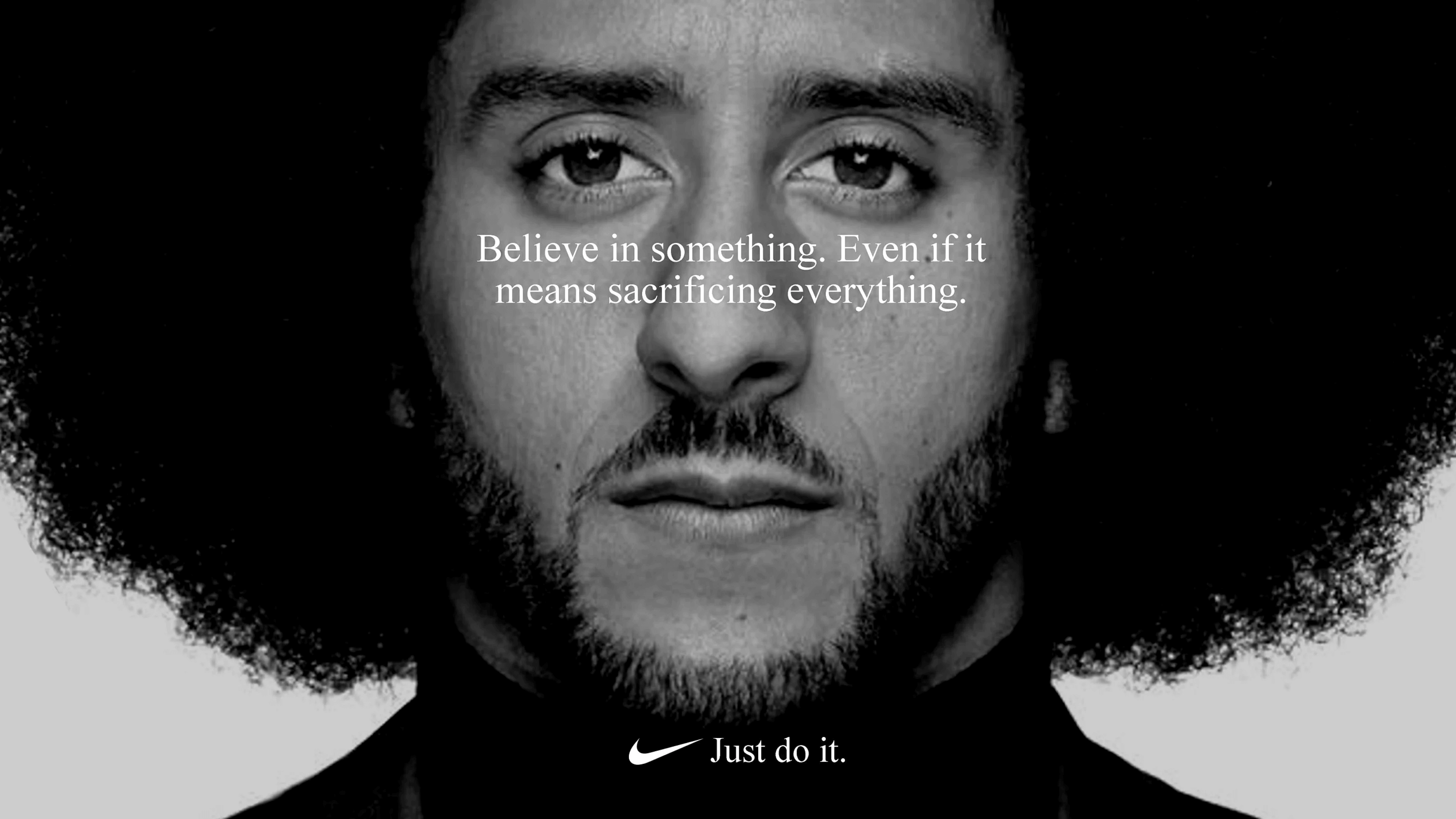
Source: RGA
The “Just Do It” campaign featuring Kaepernick reflects Nike’s stand on social issues, showcasing a brand identity aligned with contemporary movements and fostering consumer loyalty.
Related: What We Learned From The Best Marketing Campaigns of 2020
11. Retail Store Experience
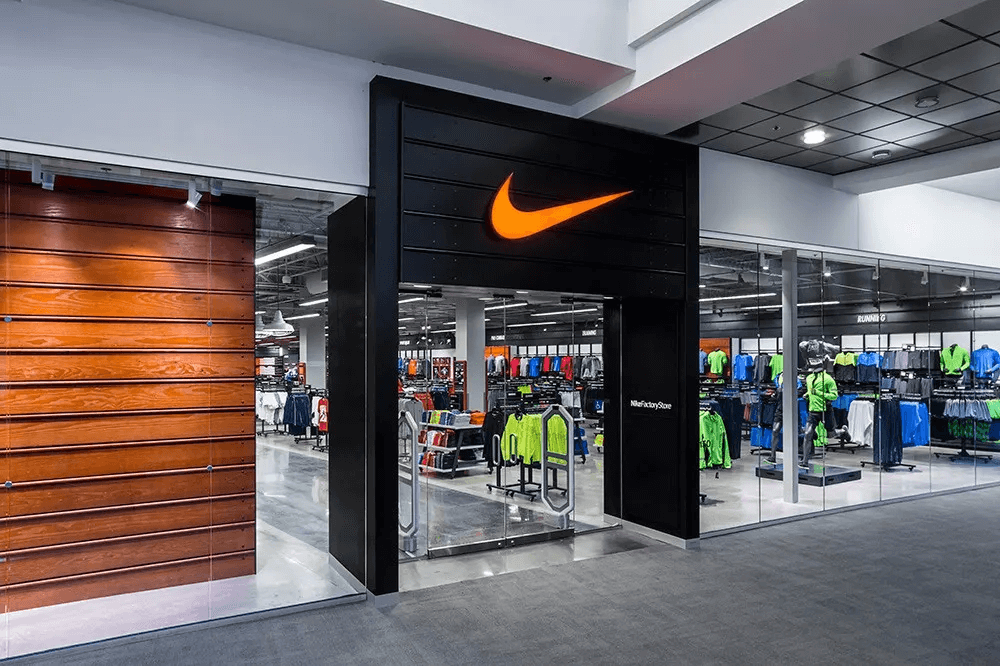
The immersive and tech-savvy store experiences, like Nike’s flagship stores, offer interactive elements, customization options, and exclusive in-store events. This Nike marketing strategy improves overall brand engagement.
12. Personalization and Customization
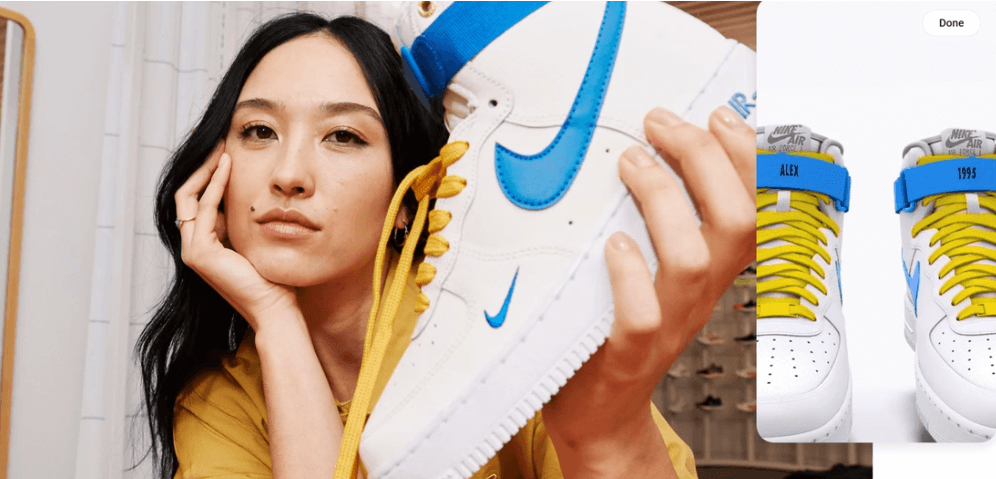
Nike’s ‘Nike By You’ platform allows customers to design and personalize their sneakers, enhancing consumer engagement and a sense of ownership.
13. Powerful Brand Imagery in Nike Advertising
Finally, here’s a compilation of the best Nike advertising campaigns and commercials to serve as inspiration for your marketing strategies.
Related: 10 ChatGPT Prompts for Crafting Killer Marketing Campaigns
14. Video Content
One of Nike’s effective marketing strategies was as innovative as its brand identity – long-form video content , a.k.a. an entire YouTube mini-series!
Called “Margot vs. Lily,” it features a pair of interracial stepsisters who are both insecure about each other’s natural ability with sports and social skills. And what’s more, it highlights their latest gear with immaculate subtlety and sophistication.
Related: 5 Inspiring Brand Video Ideas To Fuel Your Next Campaign
Use Simplified to Build a Strong and Timeless Brand Like Nike

Source: Simplified
Feeling inspired? So why not use one of the Nike marketing strategy highlighted above to boost your brand image?
Branding and marketing can be expensive and time-consuming but Simplified makes it easy for you. It is an all-in-one app for designers, content creators, marketing teams, and small businesses
Simplified offers a range of services that allow you to plan, execute, and measure the success of marketing strategies and campaigns.
Related: How Do Timeless Brands Like Ray-Ban Stay Relevant?
Here are some ways Simplified can help brands build a similar presence to Nike:
1. Social Media Scheduling and Publishing
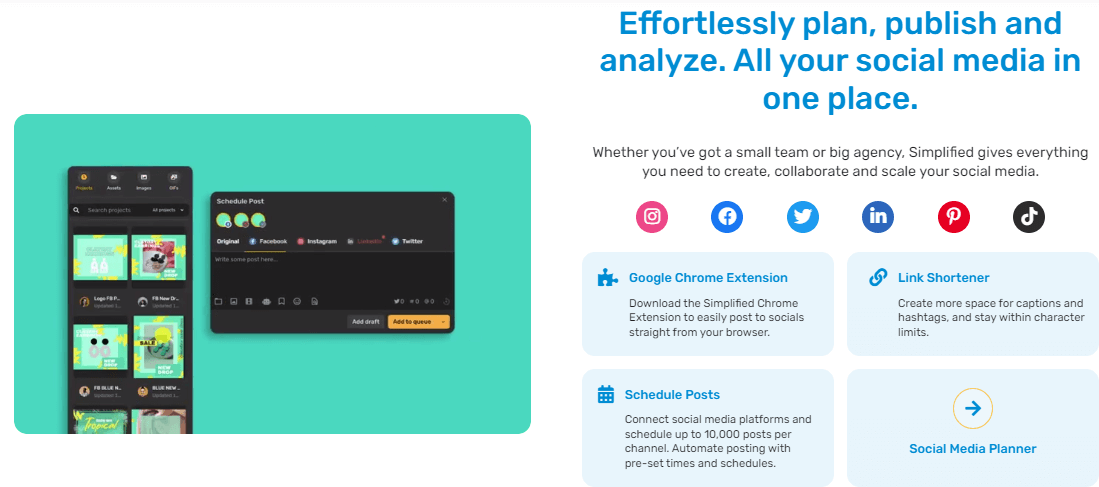
Simplified allows you to schedule and publish posts on all major social media platforms. You can easily deliver images, videos, descriptions, and ad campaigns.
2. Content Calendar
Simplified’s content calendar allows you to plan and schedule all your online content. You can schedule over 10,000 posts with preset posting times.
3. AI Content Writing

Simplified’s AI writer generates SEO-driven hashtags, quotes, and descriptions. It offers short-form writer, long-form AI writer, and full blog writer capabilities.
Related: Lessons From The Biggest Rebranding Debacles Simplified
4. Graphics Design

Simplified offers unlimited design projects with thousands of free templates and premium templates available for purchase.
Here are a few graphic design templates by Simplified tailored for marketing and branding. You can customize these templates and use them for your marketing campaign.
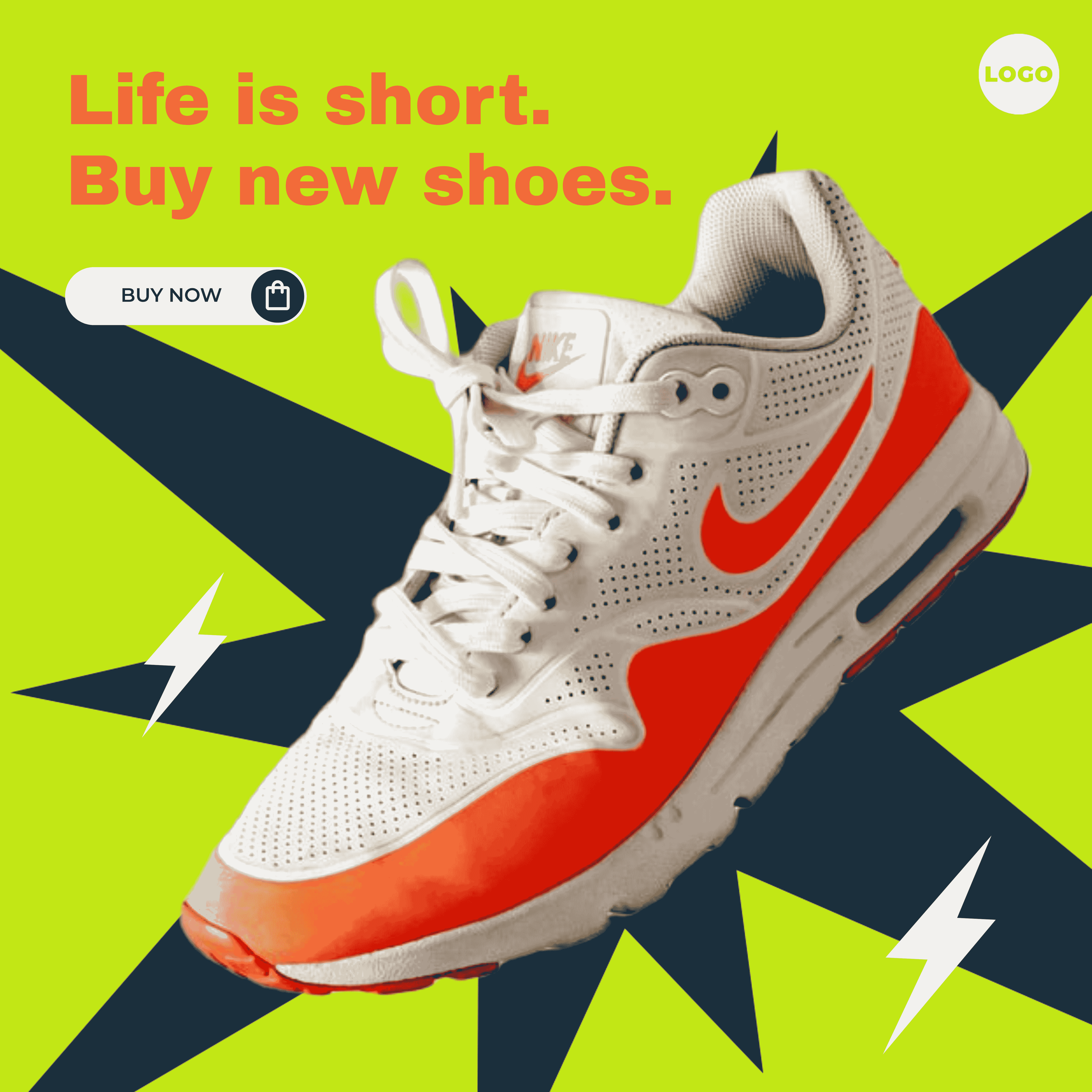
5. Video Editing & Animation

Simplified helps you to create ad videos with thousands of video templates and a built-in video editor with AI capabilities.
6. Social Media Analytics

Simplified’s social media analytics tools help modern marketers measure the success of ad campaigns. In just one click, you can see up to 12 different metrics that can enhance your campaigns and increase your ROI.
Related: Building Brands People Love: Lessons From Tesla’s Branding Strategy
7. Custom Brand Kit

Simplified helps you make special brand kits for your marketing. You can easily create unique logos and designs to make your business look good and stay the same everywhere.
8. Teams Collaboration

With Simplified, you can create a workspace and share it with your team and clients to streamline the marketing campaign. You can add comments and share projects seamlessly.
By leveraging these features of Simplified, brands can build a strong online presence like Nike. What’s best is that you can start using Simplified for free .
So, what are you waiting for? Nike did it, and you can do it too with Simplified!
Follow Nike Marketing Strategy With Simplified!

Marketing, Branding, Advertising: What’s The Difference?
How to repost an instagram story like a pro, you may also like.

Share Your Expertise: Accelerate Thought Leadership by Contributing to the Simplified Blog

AI-Powered Predictive Analytics: How to Enhance Your Digital Marketing Strategy

13 Digital Marketing Tools You Need When Starting a Business
Top 14 christmas advertising campaigns of all time, 10 creative christmas email marketing ideas for increased sales, the complete guide on whatsapp status marketing, 13 event marketing ideas that will boost attendance at your next conference, 18 simple ways to make money on your smartphone in 2024, the ultimate guide to amazon listing optimization in 2024: a detailed step-by-step tutorial, 10 must-know instagram features to elevate your marketing, 20 best persuasive push notification examples 2024, all you need to know: the key responsibilities of a product manager, 15 no code marketing tools to help you create content profitably in 2024, the ultimate guide to ai chatbots for marketing: everything you need to know.
Comments are closed.
More in: Marketing
Verification on facebook (meta): your step-by-step guide to earning that coveted blue tick, creative marketing: 5 key benefits with examples (2024), powerful tips & tricks to dominate instagram live, 5 epic ingredients for a successful social video marketing strategy, mastering social media marketing: 11 tips to elevate your strategy across every platform, how to edit an instagram post after it’s published [+tips inside], nonprofit graphic design: how to make an impact, why marketing products is more important than you think, 8 evergreen marketing strategies to take it to the next level, start with simplified it's free forever.
Design, Write, Edit videos, and Publish Content from one app
Sign up now

- Graphic Design
- Video & Animations
- Social Media Planner
- Background Remover
- Magic Resizer
- Animation Maker
- Content Rewriter
- Long Form Writer
- Instagram Reels
- Customer Testimonial
- Convert mov to mp4
- Convert jpg to png
- Instagram Stories
- Facebook Posts
- Linkedin Posts
- Pinterest Pins
- Half Page Ads
- Instagram Ads
- Facebook Feed Ads
- Billboard Ads
- Newsletter Popup
- Shopify Mobile Banner
- Shopify Home Page
- Business Cards
- Explore Static Templates
- YouTube Shorts
- Pinterest Video Pins
- TikTok Videos
- Explore Videos
- Hashtag Generator
- Youtube Video Titles
- Photo Captions
- Amazon Product Features
- Review Responder
- Blog Ideas + Title
- Sentence Expander
- Before After Bridge
- Social Media Quotes
- Meme Generator
- Explore AI Templates
- Google My Business
- Social Media Planning
- Social Media Analytics
- Video Academy
- Help center
- Affiliate Program
Latest Posts
How to add music to google slides for engaging presentations, optimizing your youtube video transcripts for accessibility and seo, how to boost customer experience through strategic social listening, 16 tips to optimize your videos for your membership platform, ai collage maker: what is it, how to use one & our top picks.
Nike Marketing Strategy 2024 - 7 Effective Findings from Case Studies

- 61 Comments
- Published on Sep 20 2023

Table of Contents
Nike marketing strategy: top effective findings from case studies, history of nike, goals and objectives - nike marketing strategy, nike’s target audience, nike marketing strategy: challenges, solutions, and its approaches, how nike’s marketing strategy evolved, how to apply the nike’s marketing strategy to your brand, growth and market reach, what to take.
Nike has taken an image of an athleisure company and an American multinational corporation, but, the brand has taken way the world with inspiration, emotion, diversity, and unity with its simple marketing campaigns.
The core purpose of Nike marketing strategy is to keep moving the world forward. Over the years, it has launched and introduced various stylish and sustainable services from remembering the Swoosh, and the tagline ” Just Do It” which does not only come into our mind.
Enlisting the action of Nike's marketing strategies is remarkable. What makes it so special to get the products?
There are multiple reasons why people buy Nike products in this case study explained, but, one absolutely convincing means is that it is more than a brand that builds communities, planet protection, and makes sports accessible beyond diverse horizons. We have also discussed the top Nike Marketing Strategies that you can learn in 2024.
Purpose of the Article
The main aim of this article by Sprintzeal caters to information as social proof from various case studies about a process, product, or service that can resolve marketing issues.
Known as one of the largest athletic apparel companies, Nike (Nike, Inc.) is an American multinational association that deals with the design, development, manufacture, and global marketing and sales of footwear, accessories, apparel, equipment, and services. Began with a mission to, “bring inspiration and innovation to every athlete” in the world It is based in Beaverton, Oregon, NIKE, Inc. includes the Nike, Converse, and Jordan brands, and many more.
It was founded by Bill Bowerman and his former student Phil Knight in 1964.

Nike plans to build a 3.2 million square foot expansion to its World Headquarters in Beaverton.
The Nike brand strategy focuses on bringing the culture of the invention to today’s athletes while solving issues for the upcoming generation.
Nike has acquired and sold several footwear and apparel companies over the years. It has also acquired Starter, Zodiac, Celect, and Datalogue and purchased RTFKT Studios.
It was founded in 1964 by Bill Bowerman, a track-and-field coach at the University of Oregon, and his former student Phil Knight as Blue Ribbon Sports. The brand was rebranded in the 60s, their company was relaunched as Nike in 1971.
In 1972, Blue Ribbon sports which later became Nike unveils "Moon Shoes
In 1974, the Waffle Trainer was patented, featuring Bill's famous Waffle outsole.
In 1982, introduced the Air Force 1 basketball shoe.
In 1994, Nike signs LeBron James
In 2000, launched Nike Shox in the market.
In 2008, introduced the Flyware shoe and signs Derek Jeter
In 2018, introduced React Element 87. Nike launched a new "Just do it" ad campaign featuring Colin Kaepernick.
In 2020, Nike Air-max 97G "Peace and love" was introduced. It also reveals uniforms for the 2020 Tokyo Olympics.
The main priorities and objectives of Nike marketing strategy,
- It includes promoting diversity, equity, and inclusion.
- Innovations that create sustainable materials and approaches to tackle environmental impact.
- Towards advancing a transparent and responsible supply chain.
- To build community by investing in organizations that pay efforts on economic empowerment, education, and equality.
- Uplifts unity with the current generation through sport and encourages an active lifestyle to reach their potential future.
To truly understand the effectiveness of Nike's marketing strategy, it's crucial to dissect the various segments within their vast target audience. Nike's ability to connect with different consumer groups is a central theme in this Nike marketing strategy case study. Let's delve deeper into these segments:
Athletes, Professionals, and Enthusiasts: Nike casts a wide net, catering to athletes at all levels, from elite professionals to passionate enthusiasts. Their product range is meticulously designed to enhance athletic performance, making Nike the preferred choice for athletes worldwide.
Running Enthusiasts: Nike's dominance in the running domain is unparalleled. They offer an extensive selection of running shoes, apparel, and accessories tailored to the specific needs of runners, whether they're seasoned marathoners or occasional joggers.
Sports Enthusiasts: Beyond athletes, Nike appeals to anyone with a fervent passion for sports. Their marketing efforts invite individuals to adopt the mindset of an athlete, whether they actively engage in sports or simply lead an active lifestyle.
Women in Sports: Recognizing the growing influence of women in sports, Nike has dedicated a significant portion of their marketing efforts to empower female athletes and sports enthusiasts.
Young Athletes: Nike understands the importance of cultivating brand loyalty from a young age. Their marketing strategies are crafted to inspire and engage young athletes, nurturing a lifelong connection to the brand.
Sustainability Advocates: In recent years, Nike has expanded its reach to consumers who prioritize sustainability and ethical practices. Their marketing seamlessly integrates these values, resonating with the environmentally conscious audience.
This diverse and inclusive approach to their target audience has been a pivotal factor in the success of Nike's marketing strategy. It showcases their ability to resonate with a wide range of consumers, from professional athletes to environmentally conscious individuals.
Striving to create more eco-friendly materials as possible, bioplastic for their sneakers is used as a replacement for plastic, leather, and other materials.
Well known for the fact that Nike promotes its products through sponsorship agreements with influencing athletes, professional teams, and athletic teams.
- High level competition of Nike with Adidas and Reebok and other companies with the closely similar product line and common target markets.
- Limited exports of Nike products due to legal restrictions can be one reason for fewer sales or revenues.
- The economic and political situation of those countries manufacturing Nike products is also one main challenge.
- Being a global brand, controversies are sensitive to the company image.
Hence, these is some of the reasons why strategies are relevant for Nike.
The questions still arise, why do people go after Nike products even if several brands apply the same approach? Does Nike market segmentation do it differently?
With being able to pull effective Nike marketing plan guidelines over past years; the other part also had faced consequences and drove up on solutions-making with,
1) Advertising
One of the key parts of the Nike advertising strategy is advertising through television ads and other social media forms with affiliate marketing.
In 1982, Nike aired its first three national television ads during the broadcast of the New York Marathon.
2) New Media Marketing
Having to understand the importance of having different mediums along with display advertising, content marketing, and social media promotions, boosts Nike global marketing strategy in the right direction.
Nike is risk-taker, with the way to early application of internet marketing, email management technologies, narrowcast communication technologies, and broadcast to build multimedia marketing campaigns.
3) Emotional Branding
How undeniable that Nike always puts powerful emotions through the brand! The advertisement seldomly briefs on its products and services.
A few of the best ads and commercials from Nike quotes for motivation, inspiration, and greatness can be:
“We gave up giving up”,
“All you have to do is pick up your feet.”
“My better is better than your better.”
“Don’t believe you have to be like anybody to be somebody.”
The building of the right emotions by Nike effortlessly comes through curated content and narrative that again narrates a story; a tale of inspiration applicable to anyone to combat their challenges and meet their victory.
Instead, Nike emotional branding has been impactive followed as an effective strategy in the world of marketing at present. It inturns invokes emotions related to success, morale, victory, and self-improvement which makes it a powerful product.
4) Nike Target Market Segmentation
One thing marketers should learn from nike segmentation targeting and positioning
is understanding their customer.
And, Nike focuses very well on their main target markets for their product and services i.e., athletes, runners, and sports enthusiasts.
In the running years, it enlarges strategies to lead precise market segments for runners, women, and young athletes.
An observation is taken into action to create that meets the custom interests as per customer requirements.
5) Convey a Story
To have been accompanied by a global audience, another marketing strategy applies by conveying the story in simple and effective points rather than using descriptive or jargon with their brand voice.
In this way, they connect and try to encourage the masses to chase their dreams and “Just do it”.

An instance as shown in the above image; another excellent technique is their tagline which builds an emotional marketing story that relates to anyone to catch their dream and build customer loyalty,
6) Newsworthiness
This brand strategy uses newsworthiness to impact and appeal to a story. In most cases, it uses recent events or happenings about what people need or want to know.
It is also tricky to decide what stories to cover, but Nike evaluates and continues with newsworthy stories before the release to avoid controversies or false information.
This pattern could be applied based on events that impact your readers all over the world
7) Invest in Customer Loyalty
In Nike, it associates with diverse masses apart from the target audience. Does it have good customer loyalty? Yes.
With less loyal customers, the challenge to come up with anticipatory decisions and effectively plan your finances can be scary.
One of the reasons the brand is irresistible globally till current which is less surprising is sole because of customer loyalty. The precise, well-executed product and service not only attract new customers but retain customers with good profit margins.
- Nike is releasing “No Finish Line,” a new book that celebrates and figures Nike’s 50 years of game-changing design and innovation in the favor of athletes and sports. It lay down a design vision for the next 50 years.

- It applies measures to create a better future by investing in active and inclusive communities. Nike Community Impact Fund (NCIF), an employee-led and neighborhood-focused approach
in aid of local community organizations globally for a positive, effective, and making a play for all the kids.
- Nike made about 35% digital and aims to achieve 50% by 2025.
One of the best ephemeral approaches is that a part of Nike’s success goes to influencing and inspirational athletes such as Michael Jordan, Mia Hamm, Roger Federer, Tiger Woods, Kobe Bryant, Lebron James, and many others.
To truly appreciate the efficacy of Nike's marketing strategy, it's essential to trace the evolutionary path it has taken over the years. This retrospective analysis of Nike's marketing strategy is integral to our Nike marketing strategy case study. Here is a comprehensive exploration of the evolution of Nike's marketing approach:
The Early Years: Nike's origins can be traced back to its predecessor, Blue Ribbon Sports, which primarily served as a distributor of Japanese running shoes. During this nascent phase, Nike's strategy was firmly rooted in performance and innovation.
The Birth of Nike: In 1971, Nike emerged as a distinct entity, drawing inspiration from the Greek goddess of victory. This marked the inception of Nike's emphasis on empowerment and achievement, an approach that would become central to their branding.
Celebrities Take Center Stage: The 1980s heralded a new era for Nike, marked by the strategic use of celebrity endorsements, most notably with basketball icon Michael Jordan. These high-profile endorsements solidified a deep emotional connection between Nike and consumers.
The "Just Do It" Era: In 1988, Nike introduced its iconic "Just Do It" slogan, encapsulating the ethos of personal determination and resilience. Swiftly, it became synonymous with the brand's identity and mission.
Digital Transformation: Nike was an early adopter of digital marketing, recognizing the potential of the internet and social media. They harnessed these platforms to engage consumers through multimedia campaigns and create a digital presence that mirrored their innovative spirit.
Emotional Branding: Nike's pivot towards emotional branding represented a pivotal moment in their marketing evolution. Rather than simply showcasing products, they focused on evoking powerful emotions, such as success, motivation, and self-improvement. This shift solidified Nike as a potent and influential brand.
Sustainability and Inclusivity: In recent years, Nike has demonstrated a commitment to sustainability and inclusivity, both in their products and marketing. They aim to create eco-friendly products and promote social responsibility, aligning with the evolving values of today's consumers.
This journey of evolution highlights Nike's remarkable adaptability and capacity to align their strategy with changing consumer landscapes. From their roots in performance and innovation to their current focus on emotional branding, sustainability, and inclusivity, Nike's marketing strategy has continued to resonate with a diverse and ever-changing audience.
To harness the power of Nike's potent marketing strategy for your own brand, it's essential to follow a well-defined blueprint. This section of our Nike marketing strategy case study provides a step-by-step guide on how to apply Nike's principles to your brand effectively:
Know Your Audience Inside Out: Much like Nike, start by conducting thorough market research to understand your target audience's specific needs, preferences, and aspirations. Tailor your products and marketing strategies accordingly.
Forge an Emotional Connection: Take a page from Nike's playbook and aim to create profound emotional connections with your audience. Share compelling stories that resonate with your brand's mission and values, inspiring and motivating your customers.
Embrace the Digital Realm: Leverage the expansive digital landscape, including social media, content marketing, and multimedia campaigns, to amplify your brand's reach. Follow Nike's lead in utilizing these platforms effectively to engage and captivate your audience.
Champion Sustainability and Social Responsibility: If your brand aligns with sustainability and social causes, make them integral to your strategy. Showcase your commitment to positive change through sustainable practices and support for relevant social issues.
Consistency is Key: Maintain a consistent brand image and message across all marketing channels. This consistency not only reinforces your brand identity but also leaves a lasting impression on your audience.
Prioritize Innovation: Continuous innovation should be at the heart of your strategy, much like Nike's dedication to pushing the boundaries. Innovate your products and marketing strategies to stay relevant and capture the full attention of your audience.
Leverage Influencers and Celebrities: Collaborate with influencers or celebrities whose values align seamlessly with your brand's mission. This partnership can help expand your reach and enhance your brand's credibility, similar to Nike's successful partnerships with iconic athletes.
By following these steps, you can effectively incorporate the power of Nike's marketing strategy into your own brand. Building a successful brand, as exemplified in this Nike marketing strategy case study, requires a strategic approach, unwavering dedication, and a profound understanding of your audience's aspirations and needs.
Don't Wait, Just Do It
In the ever-changing field of marketing, the key to success is action. Much like Nike urges you to take action; we encourage you to propel your digital marketing career forward by enrolling in Sprintzeal's Digital Marketing Course. Don’t let your hesitation cost you your opportunities.
Equip yourself with the skills, knowledge, and confidence excel in the digital marketing domain. We curate and design our courseware to ensure you're well-prepared for the dynamic world of digital marketing. So, why delay? Enroll now , and allow us to help you make your career in digital marketing.
As per Wikipedia , During the Q1 of 2020, the company's online sales have grown by 36%. While the net income in mil. is $6,046 and revenue is $46,710 in 2022.
As per the Forbes report, Nike's Financial Summary for 2022, the revenue is $46.9 billion with assets of $38.6 billion and profits of $6.1 billion.
The following image gives a glance at the percentage growth with the approaches.

Image Source: Nike
Final Results
During the article study, we also found that problems may occur subsequently with changes made to the distribution, marketing, and management strategies of Nike.
Companies can refer to Nike's marketing strategy to influence the four Ps i.e, price, product, promotion, and place. New features may expand the changes to higher growth of the product and might develop a new market.
Source 1: Nike-A Case Study Just Do It
Source 2: Nike Marketing Case Study
Source 3: An Investment Analysis Case Study: Nike - NYU Stern
Research Details
This article emphasizes curated study from three case studies apart from Nike’s official website.
Therefore, all the effective strategies are presented for information and education means for readers in response to the current marketing issues along with the given references in this article.

Winning the market is one technique that Nike has been doing so well since its implementation till date. What’s even interesting is having to market its products under its various brands and subsidiaries.
The subsidiaries like Nike+, Nike Golf, Nike Blazers, Nike Pro, Air Jordan, Air Max, and other brands like Hurley Int., Jordan, and Converse.
In the field of such marketing, digital marketing plays a dominant role. To pursue a career in digital marketing training, choosing from a globally recognized ATO (An accredited training organization) from Sprintzeal accelerates your career of interest.
To explore more courses, consider visiting Sprintzeal’s all courses and earn a certification to level up your career.
For details or queries in your field, Click Here or chat with our experts , and our course experts will get to you.

Subscribe to our Newsletters
Explore program.

Apply for Free Consultation

Nchumbeni Yanthan
Nchumbeni is a content writer who creates easy-to-read educational blogs, articles, varying client request, and social media content helping millions of learners meet their career goals.
Popular Programs

Digital Marketing Masters Program
Live virtual training.
- 4.2 (859 + Ratings)
- 45k + Learners
Trending Now
Top Google Chrome Extensions for Online Marketers in 2024
11 Most Common Misconceptions About SEO in 2024
Guide to Banner Advertising for Google Ad Sense and Other Ad Networks
Brand Managers Guide 2024
Digital Marketing – Benefits, Types, Certifications and Jobs
Latest Digital Marketing Manager Interview Questions and Answers 2024
Top SEO Topics and Concepts – Role of SEO, Google, and AI with SEO
Digital Marketer Interview Questions and Answers 2024
Fundamentals of Digital Marketing 2024
Best Digital Marketing Books for 2024
On Page SEO Guide
Digital Marketing Plan - How to Create and Execute it
Brand Marketing Strategy Guide
YouTube Marketing Guide 2024
Career in Digital Marketing - A Complete Guide
SEO Optimization Tips for 2024
Career in Advertising - The Beginner's Guide
Affiliate Marketing - A Comprehensive Guide for Beginners
CPA Marketing Guide 2024
Search Engine Marketing - A Guide for Beginners
Top Digital Marketing Tools 2024
The future of Digital Marketing
Conversational Marketing - The Ultimate Guide 2024
Coca Cola Marketing Strategy - A Case Study
Tesla Marketing Strategy: Key Lessons to Learn
Digital Marketing Challenges & Solutions in 2024
SEO in Digital Marketing - How Does It Work?
How to Create a Social Media Marketing Strategy
Email Marketing for Beginners - Tips, Tools and Advantages
Colors for Marketing: Psychology of Colors for Your Brand
LinkedIn B2B Marketing Guide
What is PERT? How to use PERT in Project Management?
A Beginners guide to LinkedIn Marketing in 2024
Traditional Marketing vs Digital Marketing: How to Choose?
Types of Infographics - When and How to Use
Digital Economy - What is it and why is it important
What is Digital Leadership? A Brief Guide
Digital Marketing Tips for 2024
Online branding - Examples & Strategies
Amazon Marketing Strategy – A Brief Guide
Netflix marketing strategy- An overview on marketing tactics of Netflix
IKEA Marketing Strategy - An Inspiring Finding from the Case Studies
Discover Starbucks Marketing Strategy: The Success Secret
McDonalds marketing strategy: Inspiring Findings from a Case Study
What is Online Networking? How Can It Benefit Your Career Success?
Microsoft’s Market Success Strategy: A Case Study
Career Opportunities in Digital Marketing - A Complete Guide
Social Media Marketing Fundamentals for Business Growth
Crafting an Effective Social Media Strategy
- Agile Management 59
- AI and Machine Learning 27
- Big Data 50
- Business Management 25
- Cloud Computing 37
- Digital Marketing 50
- IT Hardware and Networking 13
- IT Security 79
- IT Service Management 28
- Microsoft Program 2
- Programming Language 29
- Project Management 124
- Quality Management 53
Trending Posts

Last updated on Dec 1 2022

Last updated on Nov 27 2023

Last updated on Apr 4 2024

Last updated on Feb 9 2023

Last updated on Jan 12 2024

Last updated on Jan 9 2023

- Corporate Partners
- Affiliate Program
QUICK LINKS
- Terms & Conditions
- Privacy Policy
- Cookie Policy
- Become an Instructor
- Sprintzeal Reviews
SECURE PAYMENTS
Top Trending Courses
People also bought.
© 2024 Sprintzeal Americas Inc. - All Rights Reserved.
- PMP, PMI, PMBOK, CAPM, PgMP, PfMP, ACP, PBA, RMP and SP are registered marks of the Project Management Institute, Inc.
- CBAP® - Is a registered trade mark of IIBA.
- ITIL® is a registered trade mark of AXELOS Limited, used under permission of AXELOS Limited. The Swirl logoTM is a trademark of AXELOS Limited, used under permission of AXELOS Limited. All rights reserved
- PRINCE2® is a registered trade mark of AXELOS Limited, used under permission of AXELOS Limited. The Swirl logoTM is a trademark of AXELOS Limited, used under permission of AXELOS Limited. All rights reserved
- Certified ScrumMaster® (CSM) and Certified Scrum Trainer® (CST) are registered trademarks of SCRUM ALLIANCE®
- Professional Scrum Master is a registered trademark of Scrum.org
- The APMG-International Finance for Non-Financial Managers and Swirl Device logo is a trade mark of The APM Group Limited.
- The Open Group®, TOGAF® are trademarks of The Open Group.
- IIBA®, the IIBA® logo, BABOK® and Business Analysis Body of Knowledge® are registered trademarks owned by International Institute of Business Analysis.
- CBAP® is a registered certification mark owned by International Institute of Business Analysis. Certified Business Analysis Professional, EEP and the EEP logo are trademarks owned by International Institute of Business Analysis..
- COBIT® is a trademark of ISACA® registered in the United States and other countries.
- CISA® is a Registered Trade Mark of the Information Systems Audit and Control Association (ISACA) and the IT Governance Institute.
- CISSP® is a registered mark of The International Information Systems Security Certification Consortium ((ISC)2).
- CompTIA A+, CompTIA Network+, CompTIA Security+ are registered marks of CompTIA Inc
- CISCO®, CCNA®, and CCNP® are trademarks of Cisco and registered trademarks in the United States and certain other countries.
- CSM®, CSPO®, CSD®, CSP®, A-CSPO®, A-CSM® are registered trademarks of Scrum Alliance®
- TOGAF® is a registered trademark of The Open Group in the United States and other countries
- All the online courses are accredited by respective governing bodies and belong to their respective owners.
- Call us on +1 833 636 6366
- Request a callback
- Mail Your Queries
Enquire Now for Up to 30% Off!
WHO WILL BE FUNDING THE COURSE?

Powerpoint Templates
Icon Bundle
Kpi Dashboard
Professional
Business Plans
Swot Analysis
Gantt Chart
Business Proposal
Marketing Plan
Project Management
Business Case
Business Model
Cyber Security
Business PPT
Digital Marketing
Digital Transformation
Human Resources
Product Management
Artificial Intelligence
Company Profile
Acknowledgement PPT
PPT Presentation
Reports Brochures
One Page Pitch
Interview PPT
All Categories

How Nike Created and Implemented Successful Marketing Strategy powerpoint presentation slides Strategy CD
Gain valuable insights into Nikes exceptional marketing prowess with our comprehensive PowerPoint presentation, How Nike Created and Implemented Successful Marketing Strategies. This captivating analysis uncovers the key elements that have propelled Nike to its position as a global sports brand powerhouse. Delve into the power of emotional marketing, strategic product placements, collaborations, influencer marketing, and social media to grasp how Nike has forged deep connections with its target audience and built a remarkable brand image. Explore Nikes marketing mix, including product, price, promotion, and place strategies, to unravel the secrets behind their consistent success. Whether youre a marketer or an enthusiast, this presentation provides actionable lessons from Nikes triumphs that can be applied to your own marketing efforts. Download the Understanding Nikes Marketing Strategy PowerPoint presentation now and unlock the insights that will help you elevate your marketing game and achieve unparalleled success.
Gain valuable insights into Nikes exceptional marketing prowess with our comprehensive PowerPoint presentation, How Nike Cr..

These PPT Slides are compatible with Google Slides
Compatible With Google Slides

- Google Slides is a new FREE Presentation software from Google.
- All our content is 100% compatible with Google Slides.
- Just download our designs, and upload them to Google Slides and they will work automatically.
- Amaze your audience with SlideTeam and Google Slides.
Want Changes to This PPT Slide? Check out our Presentation Design Services
Get Presentation Slides in WideScreen
Get This In WideScreen
- WideScreen Aspect ratio is becoming a very popular format. When you download this product, the downloaded ZIP will contain this product in both standard and widescreen format.

- Some older products that we have may only be in standard format, but they can easily be converted to widescreen.
- To do this, please open the SlideTeam product in Powerpoint, and go to
- Design ( On the top bar) -> Page Setup -> and select "On-screen Show (16:9)” in the drop down for "Slides Sized for".
- The slide or theme will change to widescreen, and all graphics will adjust automatically. You can similarly convert our content to any other desired screen aspect ratio.
- Add a user to your subscription for free
You must be logged in to download this presentation.
Do you want to remove this product from your favourites?
PowerPoint presentation slides
Enthrall your audience with this How Nike Created and Implemented Successful Marketing Strategy powerpoint presentation slides Strategy CD. Increase your presentation threshold by deploying this well-crafted template. It acts as a great communication tool due to its well-researched content. It also contains stylized icons, graphics, visuals etc, which make it an immediate attention-grabber. Comprising seventy four slides, this complete deck is all you need to get noticed. All the slides and their content can be altered to suit your unique business setting. Not only that, other components and graphics can also be modified to add personal touches to this prefabricated set.

People who downloaded this PowerPoint presentation also viewed the following :
- Strategy , Marketing Strategy
- Emotional Marketing ,
- Product placement ,
- Collaboration Strategy ,
- Influencer Marketing ,
- Marketing mix ,
- Social Media Strategy
Content of this Powerpoint Presentation
Slide 1 : This slide introduces How Nike Created and Implemented Successful Marketing Strategy. State your company name and begin. Slide 2 : This slide states Agenda of the presentation. Slide 3 : This slide shows Table of Content for the presentation. Slide 4 : This slide highlights title for topics that are to be covered next in the template. Slide 5 : This slide provides an overview of world's biggest manufacturer of footwear and sports equipment company Nike. Slide 6 : This slide presents Key brands operated under Nike. Slide 7 : This slide displays Elements of Nike marketing strategy for target audience. Slide 8 : This slide represents Analysis of segmentation targeting and positioning of Nike. Slide 9 : This slide showcases Market share analysis of Nike and competitors. Slide 10 : This slide shows Nike comparative analysis within industry. Slide 11 : This slide presents SWOT analysis of Nike brand. Slide 12 : This slide highlights title for topics that are to be covered next in the template. Slide 13 : This slide displays How Nike uses emotional marketing. Slide 14 : This slide represents Storytelling campaigns implemented by Nike. Slide 15 : This slide showcases How Nike selects its brand ambassadors. Slide 16 : This slide shows Using emotional marketing on social media channels. Slide 17 : This slide presents Case study- Nike’s ‘Black Lives Matter’ campaign. Slide 18 : This slide highlights title for topics that are to be covered next in the template. Slide 19 : This slide displays How Nike uses product placement. Slide 20 : This slide represents Product placement process implemented by Nike. Slide 21 : This slide showcases Product placement by sponsoring teams/sports. Slide 22 : This slide shows Product placement using celebrity endorsement. Slide 23 : This slide presents Case study- Nike’s ‘Breaking Bad’ product placement. Slide 24 : This slide highlights title for topics that are to be covered next in the template. Slide 25 : This slide displays Key elements of Nike’s influencer marketing. Slide 26 : This slide represents Using athletes for Nike’s influencer marketing strategy. Slide 27 : This slide showcases Using celebrities for Nike’s influencer marketing strategy. Slide 28 : This slide highlights title for topics that are to be covered next in the template. Slide 29 : This slide shows Understanding Nike's e-commerce brand strategy. Slide 30 : This slide presents Components of Nike’s e-commerce strategy. Slide 31 : This slide displays Features of Nike’s e-commerce website. Slide 32 : This slide represents Introduction to Nike’s loyalty program for customers. Slide 33 : This slide highlights title for topics that are to be covered next in the template. Slide 34 : This slide showcases Components of Nike’s social media marketing strategy. Slide 35 : This slide shows Overview of Nike's social media channels. Slide 36 : This slide presents Activities involved under Nike’s social media marketing strategy. Slide 37 : This slide highlights title for topics that are to be covered next in the template. Slide 38 : This slide displays How Nike uses collaboration marketing strategy. Slide 39 : This slide represents Nike’s brand collaboration strategy types. Slide 40 : This slide showcases Nike’s individual collaboration strategy types. Slide 41 : This slide shows Nike's charity collaborations for attracting audiences. Slide 42 : This slide showcases a case study highlighting how Nike leveraged the power of collaboration by launching its Air Jordan line with Michael Jordan. Slide 43 : This slide highlights title for topics that are to be covered next in the template. Slide 44 : This slide shows Overview of Nike marketing mix analysis. Slide 45 : This slide presents Product categories offered by Nike. Slide 46 : This slide displays Place aspect of Nike’s marketing mix. Slide 47 : This is another slide continuing Place aspect of Nike’s marketing mix. Slide 48 : This slide represents Pricing strategies implemented by Nike. Slide 49 : This slide showcases Promotional aspect of Nike’s marketing mix. Slide 50 : This slide shows Nike’s perceptual positioning map. Slide 51 : This slide highlights title for topics that are to be covered next in the template. Slide 52 : This slide presents Key takeaways from Nike’s marketing approach. Slide 53 : This slide displays Ways in which Nike influenced apparel industry. Slide 54 : This slide represents Integrated marketing communication strategy of Nike. Slide 55 : This slide showcases Brand identity prism of Nike group. Slide 56 : This slide shows Applying Nike marketing strategy to new brand. Slide 57 : This slide highlights title for topics that are to be covered next in the template. Slide 58 : This slide presents Nike’s technological advancements for future. Slide 59 : This slide displays Nike’s focus on achieving sustainability. Slide 60 : This slide represents Nike’s plan for tapping sneaker culture. Slide 61 : This slide contains all the icons used in this presentation. Slide 62 : This slide is titled as Additional Slides for moving forward. Slide 63 : This slide showcases How Nike uses influencer marketing. Slide 64 : This slide mentions various strategies that Nike uses to reach out to its target audiences to promote sales and conversions. Slide 65 : This slide shows Analysis of Nike’s direct-to-consumer sales. Slide 66 : This is About Us slide to show company specifications etc. Slide 67 : This is Our Mission slide with related imagery and text. Slide 68 : This is Our Goal slide. State your firm's goals here. Slide 69 : This slide presents Roadmap with additional textboxes. Slide 70 : This is Our Team slide with names and designation. Slide 71 : This slide shows Post It Notes. Post your important notes here. Slide 72 : This slide depicts Venn diagram with text boxes. Slide 73 : This slide provides 30 60 90 Days Plan with text boxes. Slide 74 : This is a Thank You slide with address, contact numbers and email address.
How Nike Created and Implemented Successful Marketing Strategy powerpoint presentation slides Strategy CD with all 79 slides:
Use our How Nike Created and Implemented Successful Marketing Strategy powerpoint presentation slides Strategy CD to effectively help you save your valuable time. They are readymade to fit into any presentation structure.

Ratings and Reviews
by Byrne Cruz
June 16, 2023
by Jacob White

The Brand Hopper
All Brand Stories At One Place
Marketing Strategies and Marketing Mix of Nike
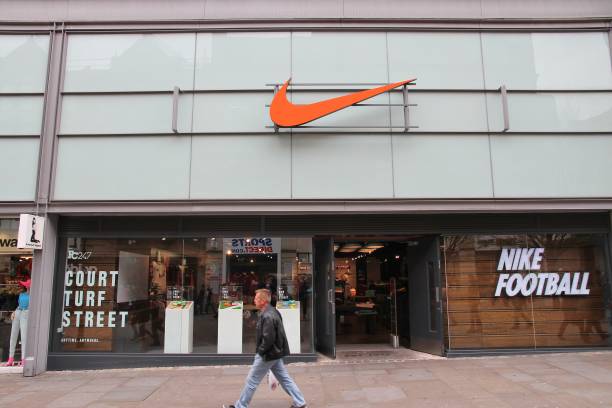
Marketing Strategies and Marketing Mix of Nike 9 min read
Nike, founded in 1964 as Blue Ribbon Sports and later renamed in 1971, is a globally recognized and highly influential brand in the sportswear and athletic equipment industry. With its iconic swoosh logo and the renowned “Just Do It” slogan, Nike has become synonymous with excellence, innovation, and empowerment.
Over the years, Nike has grown to become a dominant force, setting trends and pushing boundaries in sports fashion, footwear, and equipment.
Through a combination of cutting-edge technology, strategic marketing, athlete endorsements, and a commitment to social responsibility, Nike has solidified its position as a market leader, inspiring athletes and consumers worldwide to unleash their full potential.
Table of Contents
Marketing Strategies of Nike
Nike has consistently set the benchmark for innovative and impactful marketing strategies. By employing a combination of brand storytelling, athlete endorsements, digital campaigns, and community engagement, Nike has managed to capture the hearts and minds of consumers worldwide. In this article, we will delve into the key elements of Nike’s marketing strategies that have contributed to its unparalleled success.
Powerful Brand Storytelling : Nike’s brand storytelling is centered around the core concept of empowerment. The company has consistently used its marketing campaigns to highlight stories of real athletes who have overcome challenges and achieved greatness. By showcasing these stories, Nike creates an emotional connection with consumers, inspiring them to pursue their own dreams and goals. The “Just Do It” slogan, introduced in 1988, encapsulates the brand’s message of taking action and pushing boundaries, resonating with individuals across different age groups and demographics.
Nike’s advertisements often portray athletes in authentic and relatable situations, capturing the dedication, passion, and sacrifices they make to succeed. For example, the iconic “Find Your Greatness” campaign showcased ordinary people engaging in sports and physical activities, emphasizing that greatness can be achieved by anyone, regardless of their starting point. By emphasizing the power of the human spirit, Nike’s brand storytelling instills a sense of motivation and aspiration within consumers.
Strategic Athlete Endorsements : Nike has a long history of partnering with top athletes, both established superstars and rising stars. These endorsements serve multiple purposes for Nike’s marketing strategy. First, they reinforce the brand’s association with excellence and performance. When consumers see their favorite athletes wearing Nike products, they perceive the brand as a symbol of success and superiority.
Second, athlete endorsements help Nike target specific market segments. By selecting athletes from different sports and backgrounds, Nike can connect with a diverse range of consumers who identify with those athletes. For example, partnering with basketball legend Michael Jordan allowed Nike to dominate the basketball market and establish the highly successful Jordan brand. Similarly, collaborations with Serena Williams and Cristiano Ronaldo help Nike tap into the tennis and soccer markets, respectively.
Nike’s athlete endorsements extend beyond advertising and product promotion. The company often supports athletes in their philanthropic efforts and provides them with opportunities to contribute to social causes, further enhancing the brand’s reputation and social impact.
Cutting-Edge Digital Campaigns : Nike has been at the forefront of digital marketing, recognizing the importance of online platforms in reaching and engaging with consumers. The company leverages various digital channels, including social media, websites, mobile apps, and digital content, to create interactive and immersive experiences.
Nike’s digital campaigns often incorporate gamification, AR, and VR technologies to enhance user engagement. For instance, the Nike Training Club app offers personalized workout plans, instructional videos, and tracking features, allowing users to train like professional athletes in the comfort of their homes. Nike also launched the Nike SNKRS app, which provides an interactive experience for sneaker enthusiasts, including access to limited-edition releases, behind-the-scenes content, and exclusive offers.
Furthermore, Nike utilizes social media platforms to connect with its audience on a more personal level. The brand encourages user-generated content and hashtags, enabling consumers to share their athletic achievements, fitness journeys, and Nike product experiences. This user engagement not only strengthens the Nike community but also generates valuable brand advocacy and word-of-mouth marketing.
Influencer Marketing and Collaborations : Nike recognizes the impact of influencer marketing and collaborations to expand its reach and appeal. The brand strategically partners with influential individuals from various fields, including sports, fashion, music, and entertainment.
Nike collaborates with designers, artists, and celebrities to create limited-edition collections or unique product designs. These collaborations generate excitement and exclusivity around Nike’s offerings, driving both sales and brand visibility. For example, collaborations with renowned designers like Virgil Abloh’s Off-White and sacai have resulted in highly sought-after sneakers and apparel collections that merge sports and fashion.
Nike also engages with social media influencers and content creators who have a strong following and influence in specific niches, such as fitness, lifestyle, and streetwear. By partnering with these influencers, Nike can tap into their dedicated fan bases and gain exposure to new audiences.
Community Engagement and Corporate Social Responsibility : Nike places a strong emphasis on community engagement and corporate social responsibility (CSR) initiatives. The company believes in the power of sports to drive positive change and focuses on initiatives that promote inclusivity, youth development, and access to sports opportunities.
Nike Community Impact is an umbrella program that encompasses various initiatives aimed at making sports accessible to underserved communities. The programs include providing resources and support to community organizations, sponsoring youth sports teams, and investing in infrastructure improvements for local sports facilities.
Nike’s “ Made to Play ” initiative aims to inspire and enable more children to participate in physical activity. The program focuses on removing barriers to play and supports projects that encourage active lifestyles among children, such as building safe playgrounds and organizing sports events.
By actively engaging in community initiatives and promoting social causes, Nike demonstrates its commitment to making a positive impact beyond its products. This approach strengthens the brand’s reputation, fosters consumer loyalty, and attracts socially conscious consumers who align with Nike’s values.
Nike’s marketing strategies are a combination of powerful brand storytelling, strategic athlete endorsements, cutting-edge digital campaigns, influencer collaborations, and community engagement. These elements work together to create a cohesive and impactful brand image, enabling Nike to maintain its position as a leader in the global sportswear market. By inspiring individuals, connecting with consumers on a personal level, and demonstrating a commitment to social responsibility, Nike has successfully built a brand that resonates with athletes and non-athletes alike, fostering a strong emotional connection that transcends mere product offerings.
Marketing Mix of Nike
Nike has established itself as a dominant force in the industry. A key factor contributing to Nike’s success lies in its effective marketing mix. The marketing mix, also known as the 4Ps (Product, Price, Place, and Promotion), encompasses the strategic decisions and tactics employed by Nike to reach and satisfy its target market. In this article, we will delve into each element of Nike’s marketing mix and explore how it has propelled the brand’s growth and market dominance.
Product: At the core of Nike’s marketing mix is its exceptional product portfolio. Nike offers a wide range of products, including athletic footwear, apparel, equipment, and accessories. The company’s product strategy focuses on innovation, quality, and performance, positioning Nike as a premium brand.
Nike continuously invests in research and development to introduce cutting-edge technologies and materials in its products. Examples include Nike Air cushioning, Flyknit fabric, and Dri-FIT moisture-wicking technology. These product innovations provide athletes and consumers with superior performance, comfort, and style, giving Nike a competitive edge in the market.
Furthermore, Nike’s product line extends beyond traditional sports gear. The brand has successfully ventured into lifestyle and fashion segments, introducing sneakers and apparel that appeal to a broader consumer base, not limited to athletes. Nike’s collaborations with designers, celebrities, and influencers further enhance the desirability and exclusivity of its products.
Price : Nike employs a premium pricing strategy, positioning itself as a high-quality and aspirational brand. The company’s pricing decisions are influenced by factors such as production costs, market demand, competitor pricing, and perceived value.
While Nike’s products are often priced at a premium compared to competitors, the brand’s strong reputation and perceived value justify the higher price points. Consumers are willing to pay a premium for Nike products due to the association with quality, performance, and the brand’s iconic status.
Nike also utilizes a pricing strategy that aligns with different product categories and target markets. For instance, the brand offers a range of price points, from entry-level options to high-end, limited-edition collections. This pricing flexibility allows Nike to cater to a diverse customer base and capture various market segments.
Place : The “Place” element of Nike’s marketing mix refers to the distribution channels through which the company brings its products to the market. Nike utilizes a multi-channel distribution strategy, encompassing both physical and online channels.
Nike operates its branded retail stores globally, providing a direct-to-consumer experience. These stores serve as flagship locations where consumers can explore Nike’s entire product range and engage with the brand in an immersive environment. Nike’s flagship stores often incorporate digital technology, interactive displays, and experiential elements to enhance the customer journey.
In addition to its own retail stores, Nike leverages various distribution channels, including department stores, specialty athletic retailers, and e-commerce platforms. By partnering with select retailers, Nike expands its reach and ensures availability across different geographical locations.
Nike’s online presence is a critical component of its distribution strategy. The brand operates its official e-commerce platform, offering a seamless online shopping experience and direct access to its product range. Furthermore, Nike engages with third-party e-commerce platforms and social media channels to maximize its online visibility and accessibility.
Promotion : Nike’s promotion strategy revolves around building a powerful brand image, engaging consumers, and driving demand for its products. The brand employs a diverse range of promotional tactics to reach its target market effectively.
Nike’s marketing campaigns are centered on captivating storytelling, leveraging the brand’s association with sports, athleticism, and inspiration. Through emotionally charged advertisements and digital campaigns, Nike tells stories of real athletes, highlighting their journeys, challenges, and triumphs. This storytelling approach creates a strong emotional connection with consumers, fostering brand loyalty and advocacy.
Nike also invests significantly in athlete endorsements and sponsorships. By partnering with high-profile athletes across different sports, Nike enhances its brand credibility and connects with consumers who idolize these athletes. Nike’s sponsored athletes often feature prominently in marketing campaigns, product launches, and events, reinforcing the brand’s association with excellence and performance.
Furthermore, Nike embraces digital marketing channels and social media platforms to engage with consumers directly. The brand leverages user-generated content, influencer collaborations, and interactive experiences to foster community engagement and generate buzz around its products.
Nike’s marketing mix is a strategic blend of product excellence, premium pricing, widespread distribution, and impactful promotion. By consistently delivering innovative and high-quality products, maintaining a premium brand image, optimizing distribution channels, and captivating consumers with emotionally driven campaigns, Nike has successfully positioned itself as a leader in the global sportswear industry. The company’s marketing mix continues to evolve, enabling Nike to adapt to changing consumer preferences and maintain its competitive advantage in the market.
Also Read: The Power of Branding: A Look at Nike Iconic Brand Campaigns
To read more content like this, susbcribe to our newsletter

Leave a Reply Cancel reply
Your email address will not be published. Required fields are marked *
Save my name, email, and website in this browser for the next time I comment.
Related Posts

A Deep Dive into the Marketing Strategies of TotalEnergies
Who are the top competitors and alternatives of lvmh, who are the top apple competitors and alternatives.
Terms and Conditions
A complete summary of our service
Schedule a demo
Our live agents will demo Penji for you
Nike Marketing Strategy: 5 Nike Advertising Secrets Revealed

If there’s one thing advertisers can learn from Nike, it’s how the brand dwells on emotional marketing to capture its audience’s heartstrings. Since Nike’s launching , its dominance in marketing and advertising explains how the brand has been well-recognized worldwide. Nike dwells on its audience’s pain points and an against-all-odds marketing strategy. Remember the Colin Kaepernick campaign that pushed millions of Nike users to boycott the brand? Nike seemed unfazed about this negative publicity. Despite such campaigns, the brand still enjoys a 38.23 percent total market share. So how can brands take a leaf out of Nike’s marketing strategy? Here are five techniques in Nike’s advertising tactic .
What is Nike’s marketing strategy?
Nike’s marketing tactic leverages the four Ps—product, price, promotion, and place . While these elements are fundamental in every marketing strategy, Nike understands how to gain an advantage. The brand uses a good combination of these components to lure more potential leads.
Level Up Your Marketing Campaigns for Good
Get unlimited branded designs & rival Nike's marketing strategy

- Price – Nike products come at premium prices. However, customers still aren’t bothered by this because Nike knows how to position their products which emphasizes the benefits. And for consumers, this is essential.
- Product – You can’t deny that Nike products are high-quality and aesthetically unique compared to other footwear brands. And Nike takes pride in maintaining this reputation regarding its footwear.
- Promotion – Nike’s marketing efforts are carefully created to target a particular group of people, even with varying demographics and psychographics.
- Place – The brand also leverages third-party resellers and retailers to skyrocket sales. However, the brand diversifies its selling channels, such as online stores and physical locations.
Nike’s marketing strategy isn’t a tough nut to crack. Binge on a couple of your favorite Nike advertisements , and you’ll see there are common denominators you can quickly pinpoint. But here’s what you can learn from the Nike marketing strategy:
1. Target audience segmentation

A golden rule in marketing is to define your target audience clearly . Once you’ve narrowed down your target audience, you can classify them into groups. This way, advertisers can experiment with their marketing campaigns. Nike’s target market is diverse, making its reach extensive. The brand identifies its target audience through demographics, psychographics, behavior, and location .
Segmentation is advantageous if you’re diversifying your advertising efforts . You’ll know how to use specific campaigns that sit well with a particular group. This way, budget, time, and effort won’t go to waste.
2. Not overselling the products

If you gather your favorite Nike advertisements, you’ll notice that the brand doesn’t put its products in the limelight . Most of the highlights in their videos are pointed toward the athletes’ or people’s struggles . They create a good storyline that everyone can relate to. Regardless of your status, the struggles are vague enough to instill relevance within Nike’s target audience. However, these struggles are also identified carefully so the audience can put themselves into the athlete’s shoes .
For example, Nike targets mothers who juggle taking care of children and regular training. The struggle itself relates to all mothers who have a lot on their plate. However, Nike identifies mothers who are into an active and healthy lifestyle.
3. A focus on pain points

Another rudimentary element in Nike’s advertising strategy is its focus on its target audience’s pain points . Nike’s vision for its users is geared toward achievement and triumph in their lives. Unfortunately, we all know this win can come with many hurdles along the way. Successful athletes stood on podiums because of their hard work and determination.
But what the public eye doesn’t see is the struggles behind the success. Nike emphasizes this so potential customers can relate to the brand and its vision . In turn, it gives them a sense of inclination toward a brand that understands their daily pain points.
4. Emotional marketing

If you look at some of Nike’s video advertisements, you can’t help but shed a tear or two. Any advertiser can attest to how Nike leverages emotional appeal to tug at their audience’s heartstrings . Every video and still advertisement has a gist behind its creation, which the viewers can learn from.
Relevance is significant in advertising , and Nike integrates this element into its marketing campaigns. Relevance in messaging and visuals is the primary reason why Nike’s advertising methods reel in more customers.
5. Working with celebrities and influencers

Nike’s marketing strategy also relies on celebrities, influencers, and athletes. The brand supports popular and unpopular athletes who have motivational stories and journeys to share . Working with people who have been on the same road will make brand communication stronger. This is because people look up to others who can rise amidst the struggles in their lives.
Who is Nike’s target audience?
Nike segments its target audience into four parts:
- Demographic
- Psychographic
- Geographical
The demographic segment of Nike’s target audience range between 15 and 40 year-olds . The brand primarily targets teens who look up to famous and successful athletes. Nike also targets the middle-aged group to extend its popularity to the younger generation. For example, a 40-year-old mother into volleyball can influence her children to maintain an active lifestyle.
Nike selects people who understand and aim for an active lifestyle in psychographics segmentation . The brand’s audience revolves around anyone who has a body and wants to be an athlete. For Nike, if you have a body, then you’re an athlete. Also, if you’re constantly thinking about sports, watching sports, or doing sports, you belong to Nike’s target market.
Additionally, behavioral segmentation pertains to how Nike makes its target audience feel . Nike reminds users that it’s not about how its products make you look. But it’s all about how Nike products make you feel as an athlete.
Finally, Nike dwells on geographical location because sports vary by location . For instance, Nike can’t market to football players in India, Finland, or the Philippines because this sport isn’t as popular compared to the popularity of football in Mexico, England, or Australia.
The bottom line
Nike is a leader in marketing, and for a good reason. They never fail to take notice of their audience’s pain points and offer an inspiring solution that keeps customers for life. Aside from creating emotional videos that pack a punch, Nike’s still ads are equally riveting. Nike’s advertising graphics speak the message directly and clearly. If you want to succeed in online and offline marketing, creating compelling visuals is key for higher engagement, awareness, and conversions .
Do you need advertising designs for your brand? Sign up for Penji’s 30-day money-back guarantee and request your first ad design. You’d be surprised how quick, easy, and affordable unlimited graphic design is!
Get unlimited branded designs & rival Nike's advertising
Related articles

ChatGPT vs. OpenAI: What’s the Difference?
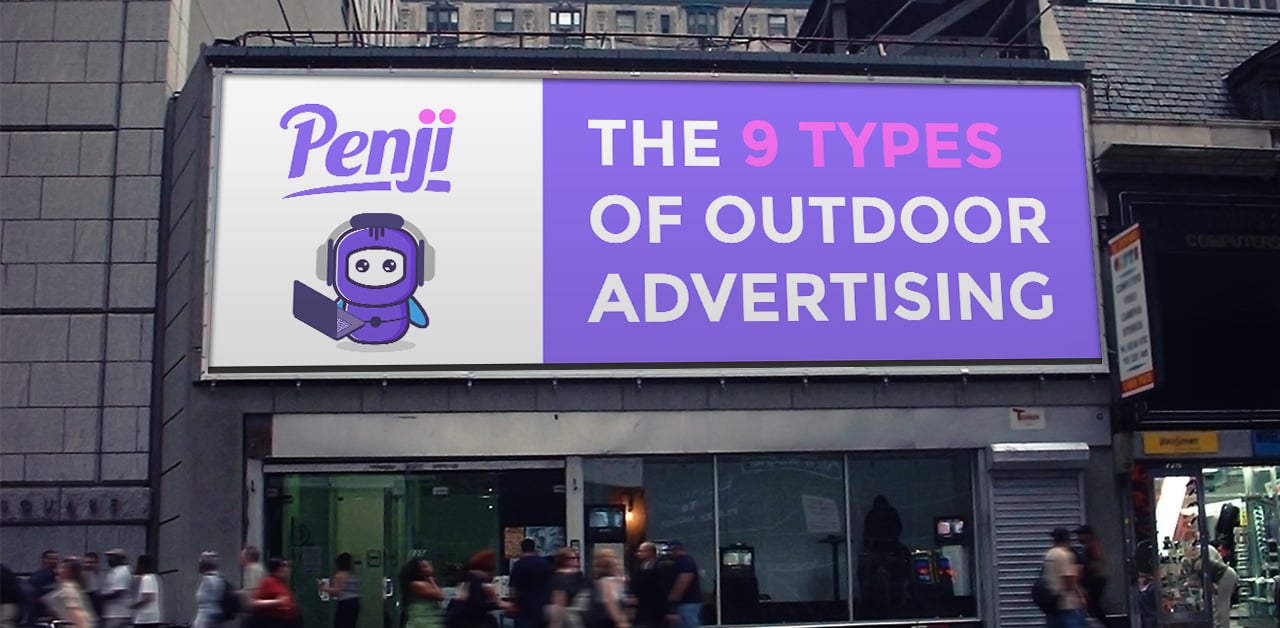
9 Types of Outdoor Advertising that Work the Best

The 10 Best AI Poster Maker Apps To Explore

38 Graphic Design Firms You Need to Know in 2024
Beat Nike's marketing strategy with unlimited designs

Nike Market Segmentation, Targeting, and Positioning
Discover more helpful information.
Nike is one of the top sports shoe suppliers and sports equipment manufacturers globally. The company was first launched in 1964 by Phil Knight and Bill Bowerman. Whether its shoes and sports apparel for your daily workouts or just want to have signature shoes designed for your favorite athlete, you indeed have tried visiting Nike for these items. This kind of response from its customers reflects one of its marketing strategies to target athletes and young adults.
Since it was founded, Nike has vastly improved its products to be lighter and more comfortable, enabling customers to use its products for longer hours without feeling uncomfortable and sore on their feet. The firm also offers a vast selection of shoe types and colors focusing on training, running, or lifestyle shoes. It has also expanded its brand to provide sports equipment, guards, clothing, backpacks, and soccer balls.
The company's mission is to excel in nurturing and expanding human potential and impacting their customers in different communities. Since it's a global brand, it provides easy access to its products by mounting physical stores worldwide. This strategy and other marketing elements will be comprehensively discussed in this article using the Nike market segmentation approach.
Mind Map: Nike Market Segmentation, Targeting, and Positioning
If classifying facts using charts is not your liking, you can adopt a much easier and modern approach through mind maps. Here's how it looks.
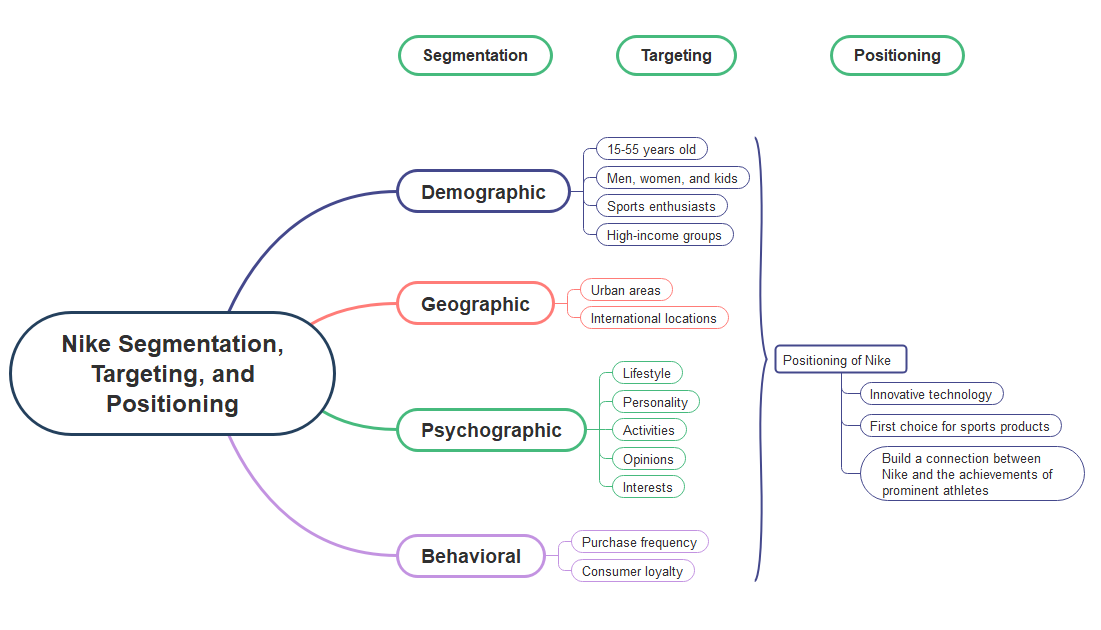
- Market Segmentation
- Demographic
- Psychographic
- 15-55 years old
- Men, women, and kids
- Sports enthusiasts
- High-income groups
- Urban areas
- International locations
- Personality
- Purchase frequency
- Consumer loyalty
Positioning
- Innovative technology
- First choice for sports products
- Build a connection between Nike and the achievements of prominent athletes
Market Segmentation of Nike
In its most straightforward meaning, Market segmentation refers to the process of dividing a company's target market into achievable and approachable groups. Nike creates sub-segments based on needs, demographics, priorities, shared interests, and behavioral and psychographic criteria.
The process of identifying the segments will vary from company to company. For Nike, its market segmentation involves four categories - geographic, demographic, psychographic, and behavioral.
For Nike's demographic segmentation , the firm included various age groups, gender, and the customer's financial status. Nike has classified its products according to gender and group, typically between 15 and 55 years old. The company also categorizes its products from men, women, and kids. Nike offers promos, discounts, or cuts prices to reduce costs in special cases. The company's special offers sometimes fall on special occasions to entice customers to buy their products. It's Nike's way to have customers buy products that they cannot afford before the discount.
The presence of physical stores in different parts of the world is one of Nike's strategies under its geographic segmentation . This segment acknowledges that each country has varied lifestyle habits and cultures. The company introduced different products for various countries that meet the customers' needs. Nike conducts multiple promotional campaigns in the US, Europe, Australia, Asia, Africa since sports vary in regions and cities. You might notice that most commercials in the US focus on baseball and football, while in Europe, ads refer to soccer.
Nike also customizes its campaigns in New Delhi, India, by promoting cricket equipment and rugby for England and Sydney. Nike's most significant markets include North America, China, and Western Europe, where the firm performs segmentations more and focuses on urban areas.
Nike's psychographic segmentation tackles offering their customers a selection of products that can cater to their needs and suit their interests. This stage in the Nike market segmentation allows Nike to explore the preferences of every customer.
Finally, the behavioral segmentation of Nike is about providing benefits to customers through clothing, comfortable footwear, and essential sports equipment. Nike also creates a series of versions for a product to satisfy the preferences of each customer. Nike gives its customers the mindset of feeling athletes if they use Nike products. It also builds customer engagement by offering distinct quality and innovative products to choose from. More importantly, Nike allows its target market to share their experiences with family and friends, including product reviews on the internet and other social media channels. This, in turn, will have a significant effect on customers' purchasing behavior.
Targeting of Nike
This marketing strategy phase includes systematically choosing the segments that will yield the most efficient and practical approaches to achieve the firm's goals. As you know, Nike has three classifications of its target customers, including men, women, and kids. For men, Nike designs shoes for running, lifestyle, gym and training, American football, football, tennis, golf, crickets, baseball, basketball, skateboarding, softball, and athletics.
Nike includes yoga in its shoe selection for women. Meanwhile, the company targets young athletes in its kids' classification. Besides providing quality shoes, Nike offers various colors for its products since the company believes that comfort and the products' physical appearance can give satisfaction and enjoyment to customers.
Positioning of Nike
Positioning is all about placing the company's brand in the market with other competitors. Nike has strategically positioned its brand as a market leader for sports equipment that provides innovative and premium quality technology. Nike's swoosh logo, "Just Do It" slogan, and its promotional initiatives to connect to magnificent achievements of great athletes convinced its customers that it's a victorious and ambitious brand. Nike' speaks' into athletes' hearts through meaningful and unique feelings, making the firm exceptional from its competition. The company has also solidified its place in fashion, where a part of its products defines specific markets' lifestyles.
Nike has effectively imprinted a strong belief in its customers' minds that its products are the best options every time they need to buy sports products.
The Nike market segmentation, targeting, and positioning will be ideal to the points discussed above outlined in simplified words. The table below will provide a quick illustration of Nike's three elements for its marketing initiatives.
Bonus: 2 Other Analysis Diagrams of Nike
Nike pestel analysis.
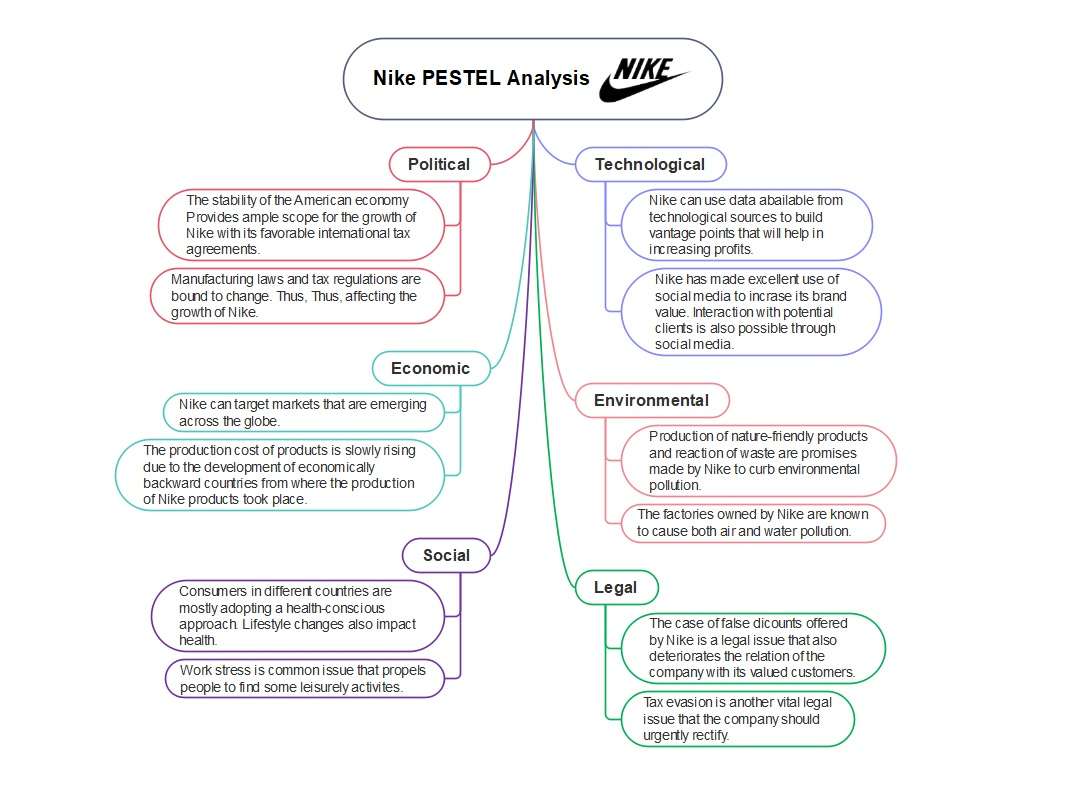
In the SWOT Analysis below, Nike's strengths include a global presence, a high brand value, substantial market share, and effective marketing. However, they face weaknesses such as supply chain issues, rising operational expenses, reliance on the US market, and legal disputes. Nike has opportunities to expand into sports infrastructure, in-house manufacturing, and digital channels. Nevertheless, they face threats from counterfeit products, trade tensions, and ongoing supply chain challenges.
Nike SWOT Analysis
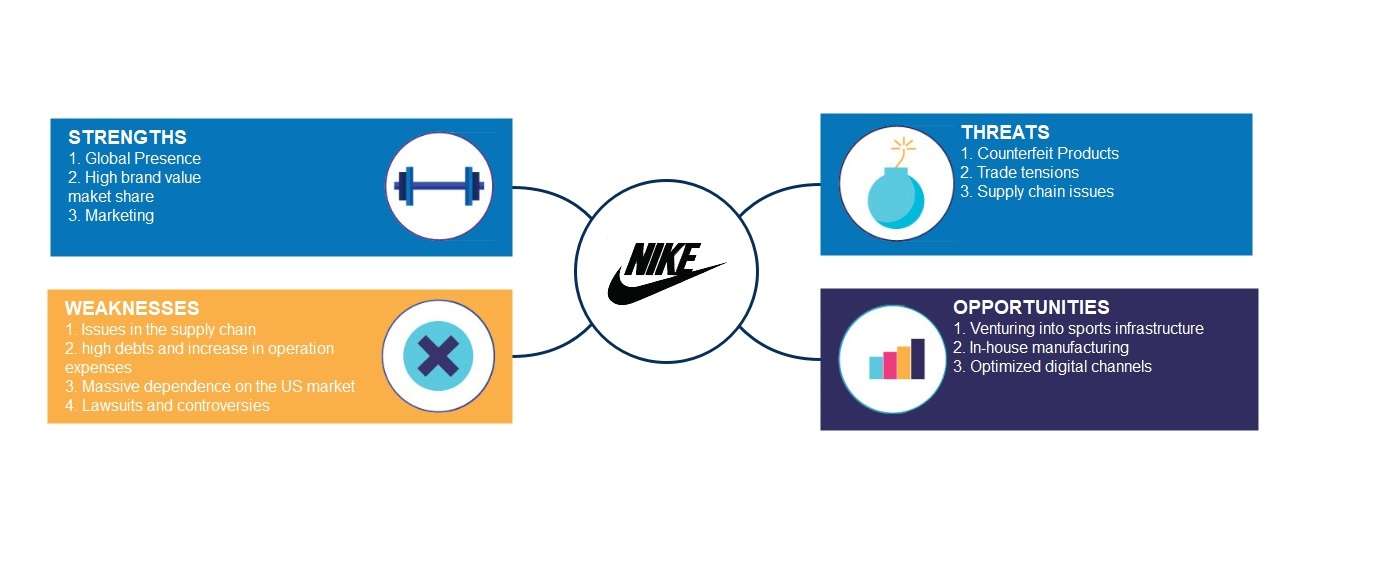
In the PESTEL analysis below, Nike's political factors include the stability of the American economy and manufacturing regulations. Economic aspects encompass emerging global markets and production costs. Social factors involve changing lifestyles and workplace stress. Nike is affected by technological advancements and social media trends. Environmentally, they face concerns over eco-friendly products and their factories' pollution impact. Legally, the company deals with false discounts and tax evasion issues.
Key Takeaways
Nike, through the years, had its formidable competition but continues to solidify its brand in the industry, thanks to its effective marketing initiatives. Similar to other international brands, it is very evident in Nike's marketing approach the intent to vary its product offering depending on its target customer and location. In the industry where Nike belongs, it is essential to study every marketing segment to cater to its customers' needs better. For example, a target market in countries that experience winter must not offer summer products. The same goes for a basketball country that must not be provided with equipment used to play cricket.
This also goes to other companies who want to use Nike's market segmentation, targeting, and positioning strategies. Besides the weather, it is also vital to consider the culture and preferences of customers in a specific region or location for the product to have value to them. Meanwhile, your brand does not necessarily have to be in the global market to take inspiration from Nike's principles. There are fundamental principles that smaller companies can use for their brands.
This article also presented a simplified diagram to categorize the three principles in Nike's marketing strategy. Modern diagramming utilizes mind maps for illustration. EdrawMind is a mind mapping tool that uses a friendly interface ideal for beginners and advanced users. The pre-built templates on market segmentation and STP Analysis are helpful, especially for those who do not want to structure their mind map from scratch. The software is flexible enough, giving you options for creating and editing your mind maps. You can use the browser or launch the software from your desktop. Either way, the features stay the same.
- Learning from Nike's Positioning Segmentation and Targeting in Marketing
- Market Segmentation: Definition, Types, Benefits, & Best Practice
- Market Segmentation, Market Target and Market Positioning of Nike Company
- Nike's Segmentation, Targeting and Positioning on the Tennis Market - Example
- Nike's Target Markets: Everything You Need to Know
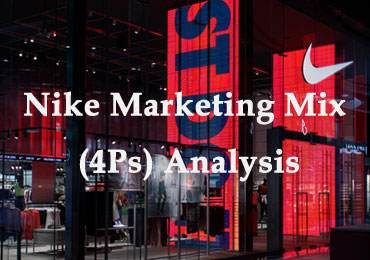
Nike Marketing Mix (4Ps) Analysis

Nestlé Mission and Vision Statement Analysis

Samsung Segmentation, Targeting, and Positioning

H&M Mission and Vision Statement Analysis

KFC Mission and Vision Statement Analysis

Home Collections Creative slides Marketing Strategy Nike Marketing Strategy
Nike Marketing Strategy PPT Template and Google Slides
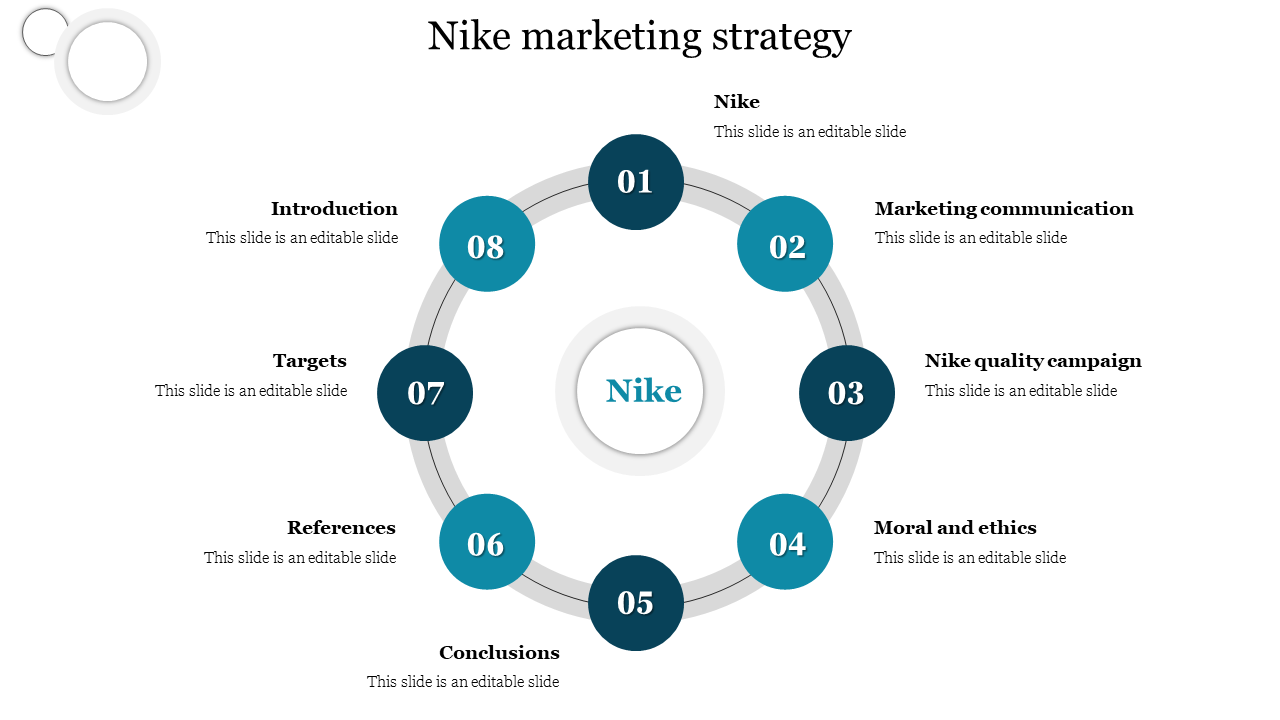
Unique Marketing Strategy Presentation Slide
Features of the template.
- 100% customizable slides and easy to download.
- Slides are available in different colors
- The slide has 4:3 and 16:9 formats.
- Easy to change the slide colors quickly.
- Appealing Presentation to impress an audience.
- Create feature-rich slide presentations.
- An eye-pleasing color slide helps to give a catchy display.
- It is adept with PPT and Google Slides.
- marketing strategy
- circular loop
- Marketing Strategy
- Marketing Strategies
- Marketing Plan
- Marketing Strategy Plan
- Marketing Strategy Diagram
- Marketing Strategy Infographics
- Nike Marketing Strategy
- Marketing Strategy Of Nike
- Circular Loop
- Google Slides
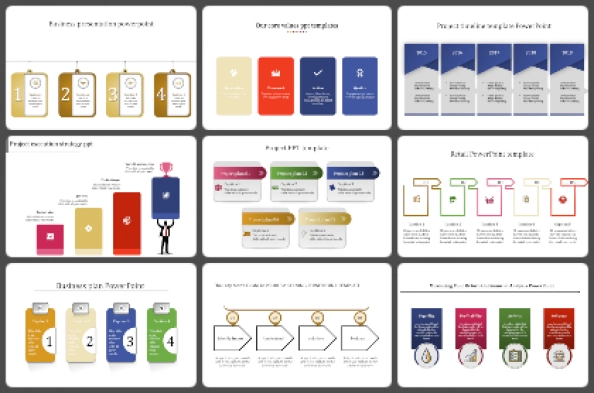
Linear - Single
604+ Templates
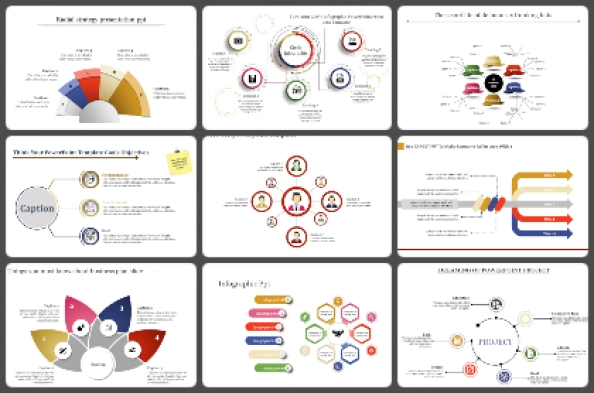
Linear - One to Many
854+ Templates
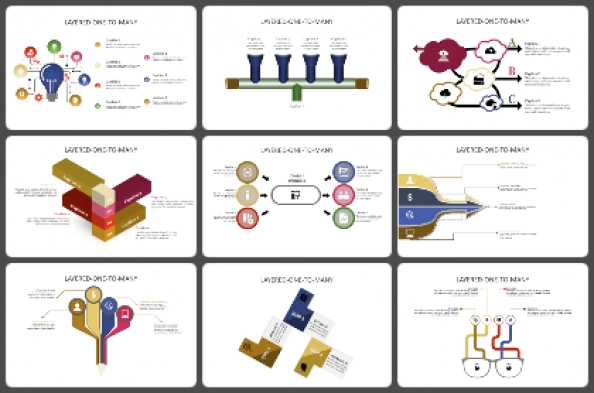
Linear - Many to One
62+ Templates
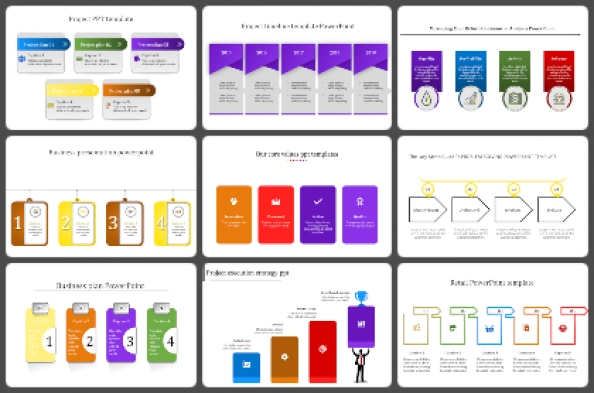
Linear - Parallel
605+ Templates

Linear - One to Many to One
25+ Templates

Linear - Many to One to Many
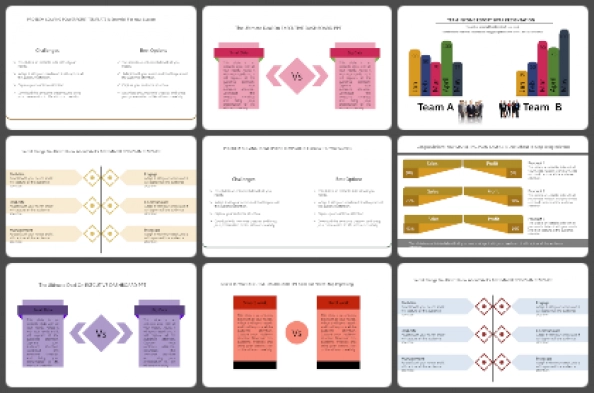
Linear - Opposition
27+ Templates
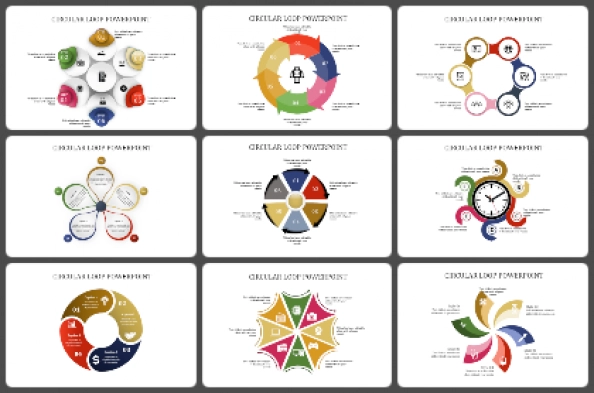
Circular - Loop
468+ Templates
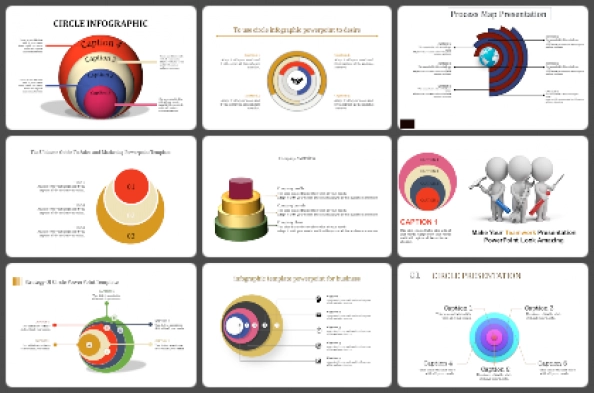
97+ Templates
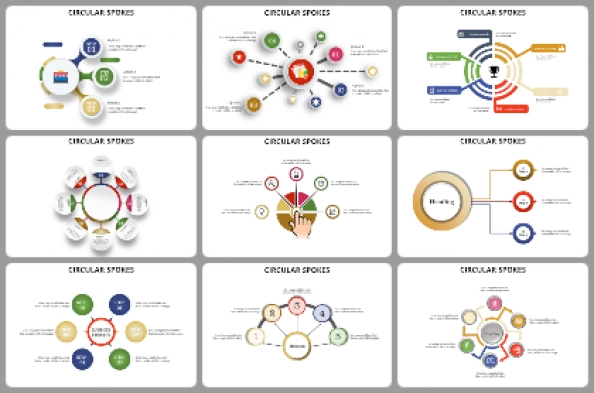
Circular - Spokes
453+ Templates
You May Also Like These PowerPoint Templates


IMAGES
COMMENTS
Nike marketing strategies. Aug 9, 2009 • Download as PPTX, PDF •. 45 likes • 77,268 views. S. shivani sharma. this is all about nike its marketing strategies and how nike is able to always be one step ahead from its competitors . Education Business News & Politics. 1 of 18.
The Nike marketing strategy operates in a focused target market which is the sporting goods industry. Nike's target audience is professional athletes, sportspersons, and people who want a healthy and sporty lifestyle. Focused marketing helps the Nike company be at the top of the mind of its consumers.
NIKE MARKETING CAMPAIGN. INTRODUCTION. INTRODUCTION. Hannah. - Marketing Communication Process. - Objectives & Message of Nike 'Equality' Campaign. Meg. - Communication Tools used for Nike 'Equality' Campaign. - How Successful was the Nike 'Equality' Campaign.
4. Focusing on Pain Points: Now, everybody knows the importance of consumers, but Nike goes all the way to focus on their audience's pain points. This is an extraordinary element in Nike's advertising strategy. Nike's goal is to make its users triumph and push them to greater achievements.
Digital Engagement: Nike embraced digital marketing, leveraging social media platforms and e-commerce channels to reach a wider audience and connect with Chinese consumers. Nike's Success in China: A Testament to Adaptability. Nike's strategy proved to be successful, as the company has become a leading player in the Chinese sportswear ...
Nike's digital marketing strategy has proven to bring great victory for the brand. Nike is the most valuable global apparel brand, for the 7th consecutive year in 2022. It holds the largest market share with 15% in sportswear as of 2022. The company's financial record is also strong: ...
Street Journal, Nike's flagship digital revenue increased 84% at the end of the 2022 fiscal year's second quarter. This increase in sales gains and profits was due to " strong sales from ...
Goals and Objectives - Nike Company Marketing Strategy. Source: Nike. Here are some goals and objectives of the marketing strategy of Nike: Increase brand awareness, expand customer base, and drive sales. Empower audiences through sport, promoting emotive messages of strength, equality, and diversity.
1) Advertising. One of the key parts of the Nike advertising strategy is advertising through television ads and other social media forms with affiliate marketing. In 1982, Nike aired its first three national television ads during the broadcast of the New York Marathon. 2) New Media Marketing.
The First Nike Marketing Strategy. Bill Bowerman was a track and field coach, as well as one of the co-founders of Nike. In the mid-1970's, he began experimenting with his wife's waffle maker to design a better tread for running shoes. As the story goes, he ruined the waffle maker but invented a brand new type of shoe.
Nike's branding strategy is based on two main pillars: innovation and inspiration. Nike strives to create products that are innovative, functional, and stylish, using cutting-edge technology and ...
Download the Understanding Nikes Marketing Strategy PowerPoint presentation now and unlock the insights that will help you elevate your marketing game and achieve unparalleled success. ... This slide displays Elements of Nike marketing strategy for target audience. Slide 8: This slide represents Analysis of segmentation targeting and ...
A key factor contributing to Nike's success lies in its effective marketing mix. The marketing mix, also known as the 4Ps (Product, Price, Place, and Promotion), encompasses the strategic decisions and tactics employed by Nike to reach and satisfy its target market. In this article, we will delve into each element of Nike's marketing mix ...
What can you learn from Nike's marketing? Excited look inside one of the best marketing campaign examples out there? Curious to learn what makes good marketi...
Relevance in messaging and visuals is the primary reason why Nike's advertising methods reel in more customers. 5. Working with celebrities and influencers. Nike's marketing strategy also relies on celebrities, influencers, and athletes. The brand supports popular and unpopular athletes who have motivational stories and journeys to share.
Nike Marketing Strategy presentation templates and google slides. Toggle Nav. Search. Search. Search. 5. Notifications 5. SlideGeeks added 143 new products (e.g. Completely Researched Decks, Documents, Slide Bundles, etc), which included 1573 slides in total in the past 24 hours. 1 day ago. Get in touch with your inner creative with our ...
Pricing strategy: Nike has value based/price leadership strategy that offers the customer with the. price that customer value so it has high prices for its products as it has niche market to serve ...
This Nike Brand Strategy Ppt PowerPoint Presentation Complete Deck With Slides acts as backup support for your ideas, vision, thoughts, etc. Use it to present a thorough understanding of the topic. ... This slide presents marketing mix strategy used by Nike as part of its business plan, helpful in highlighting factors used for profitability and ...
Targeting of Nike. This marketing strategy phase includes systematically choosing the segments that will yield the most efficient and practical approaches to achieve the firm's goals. As you know, Nike has three classifications of its target customers, including men, women, and kids. For men, Nike designs shoes for running, lifestyle, gym and ...
Unique Marketing Strategy Presentation Slide. A marketing strategy template is a resource that provides a framework for businesses to create an effective marketing plan. It includes expert strategies and actionable tips that can be customized to align with your business goals. Take advantage of this resource and save time by using our template ...
Nike is "unwinding key elements" of CEO John Donahoe's strategy that have "backfired as a growing number of upstarts nip at its heels," according to Inti Pacheco of the WALL STREET JOURNAL. Since the pandemic, Nike has "lost ground in its critical running category while it focused on pumping out old hits and preparing for an e-commerce ...